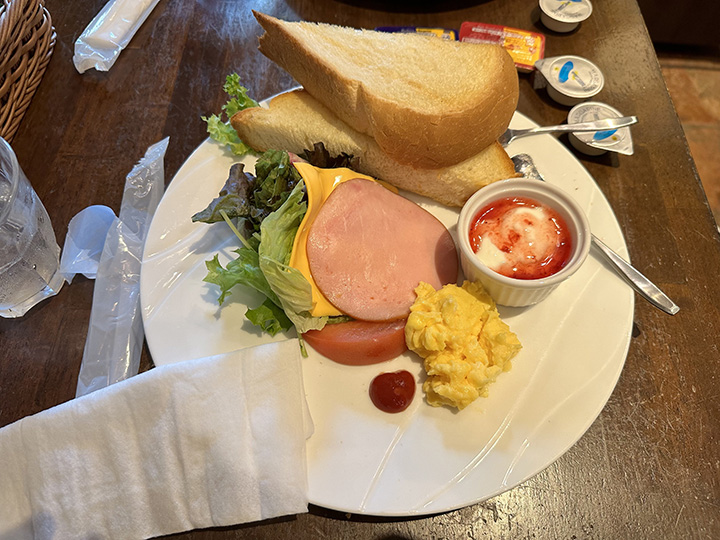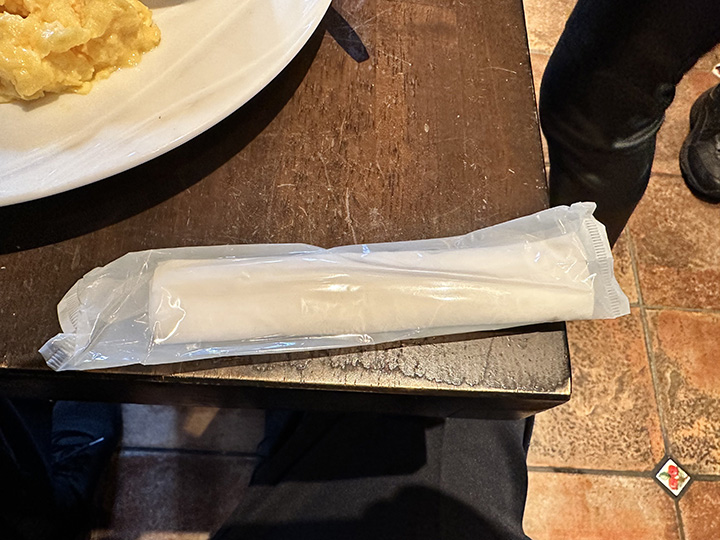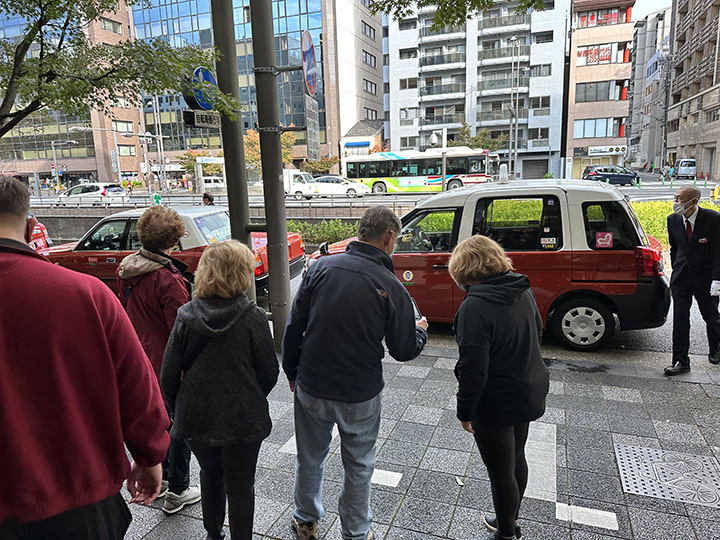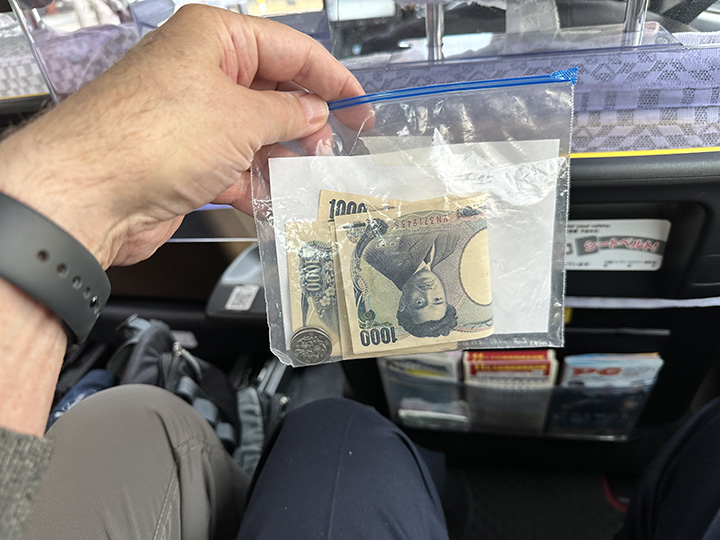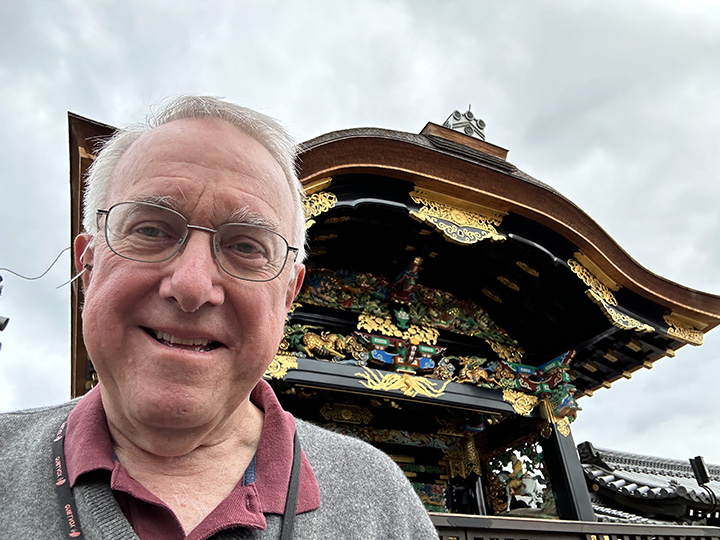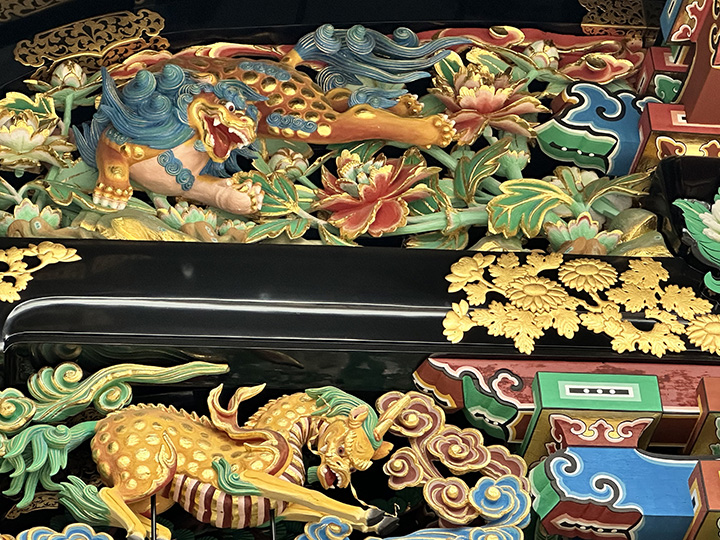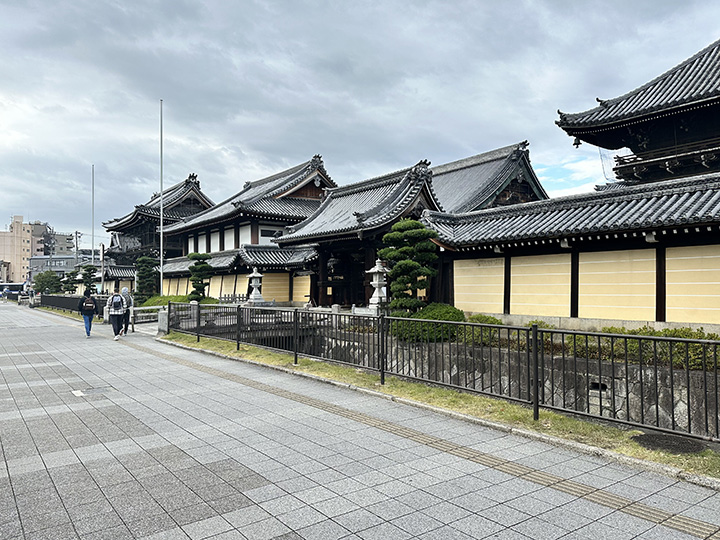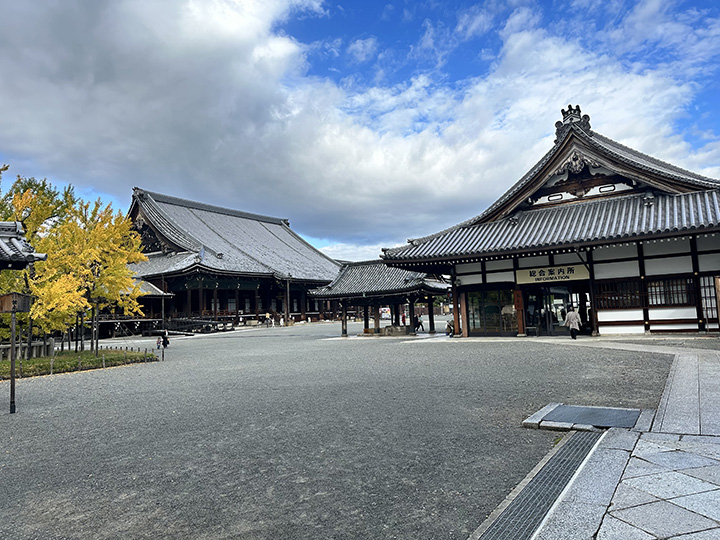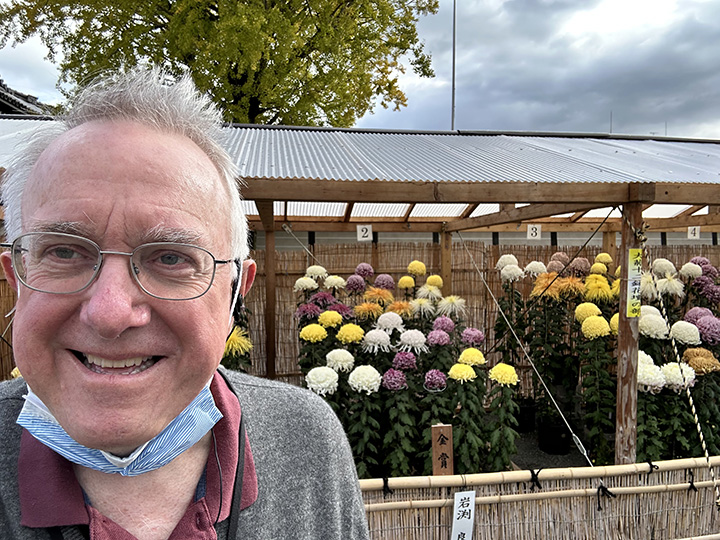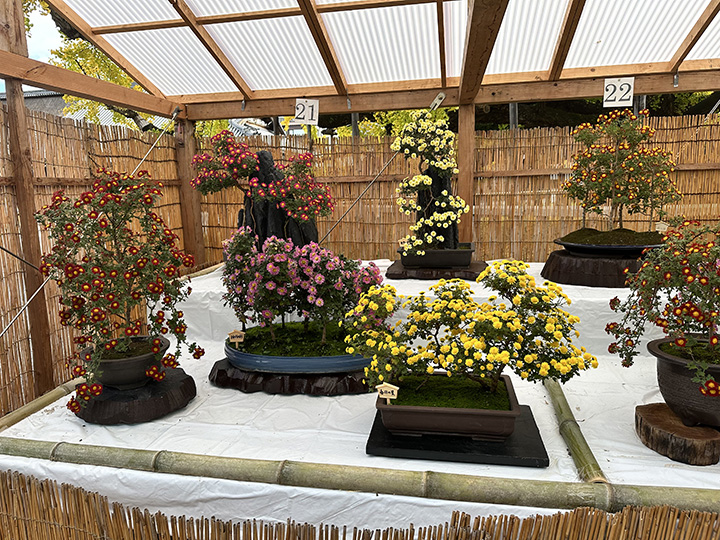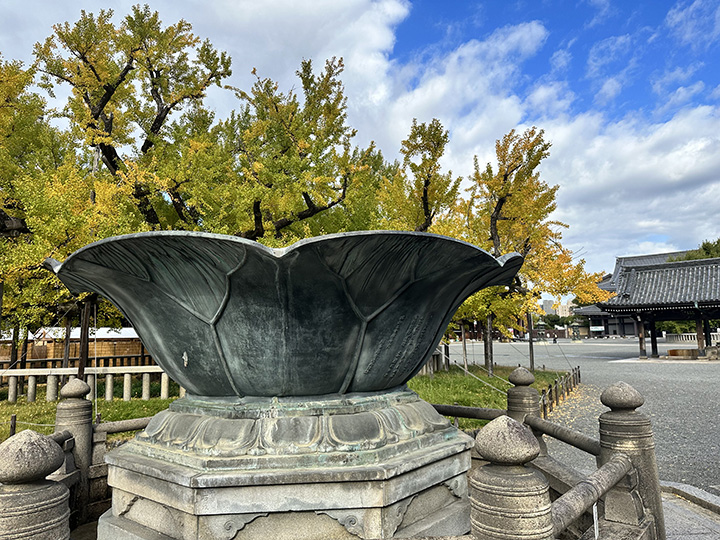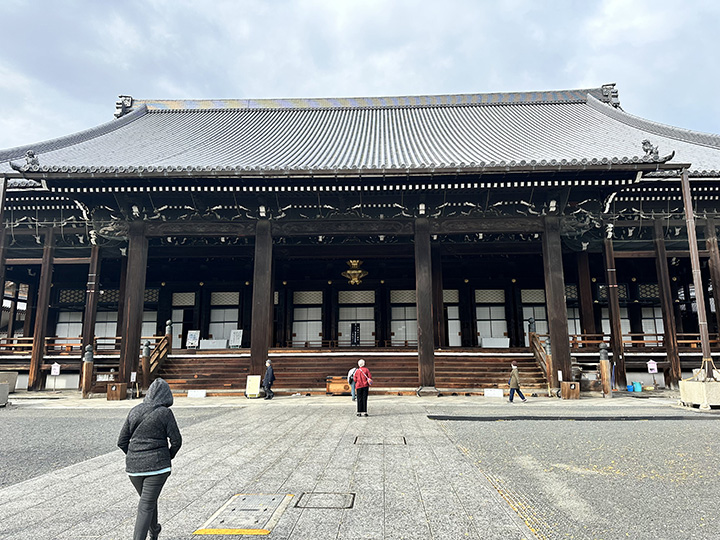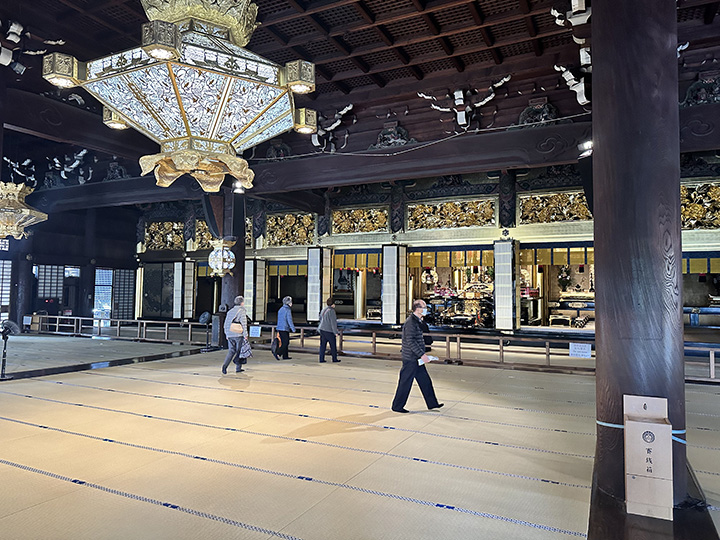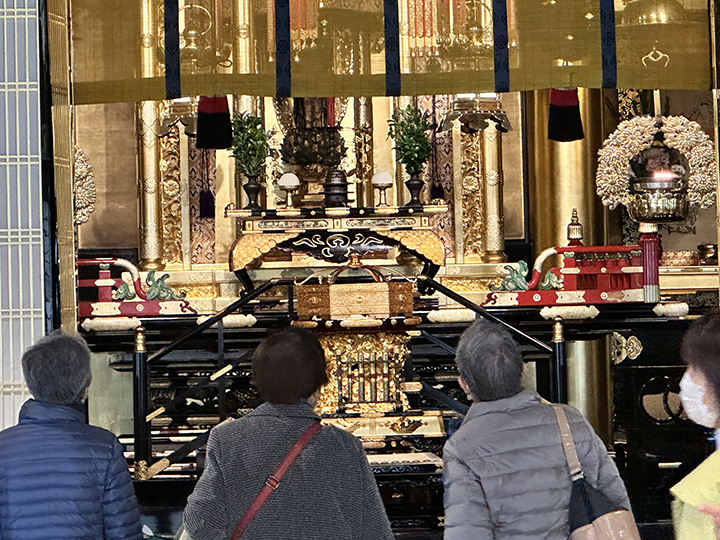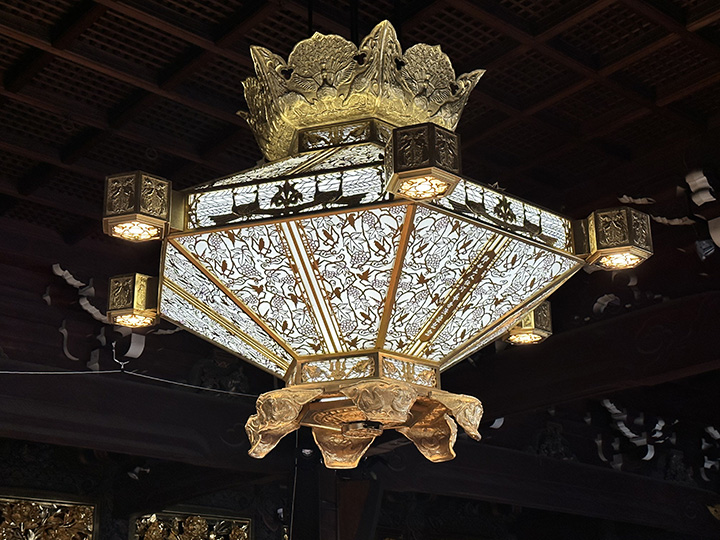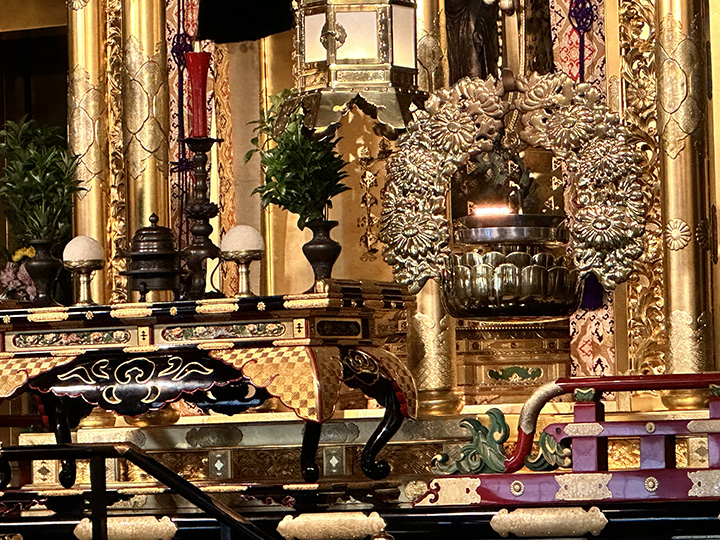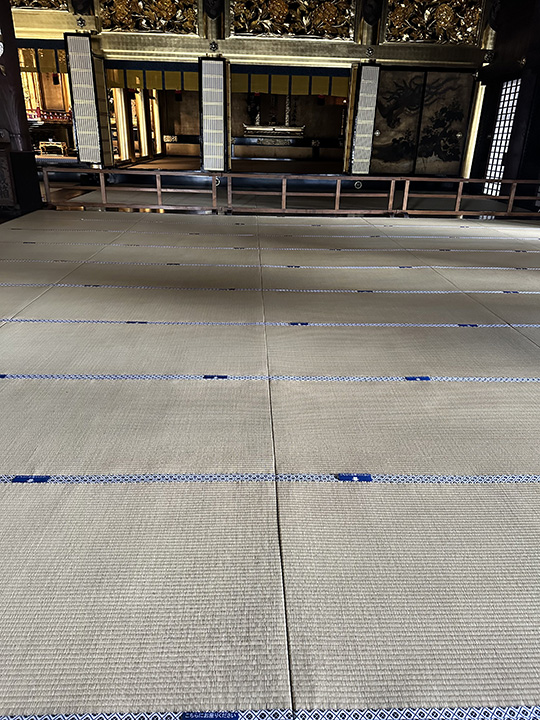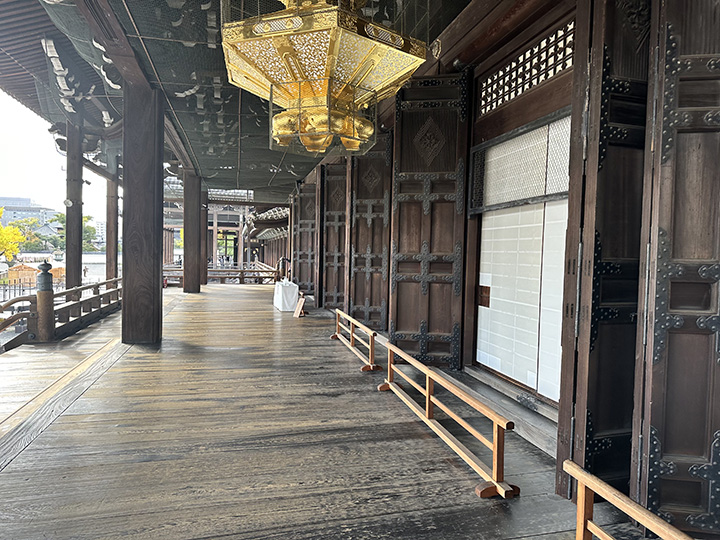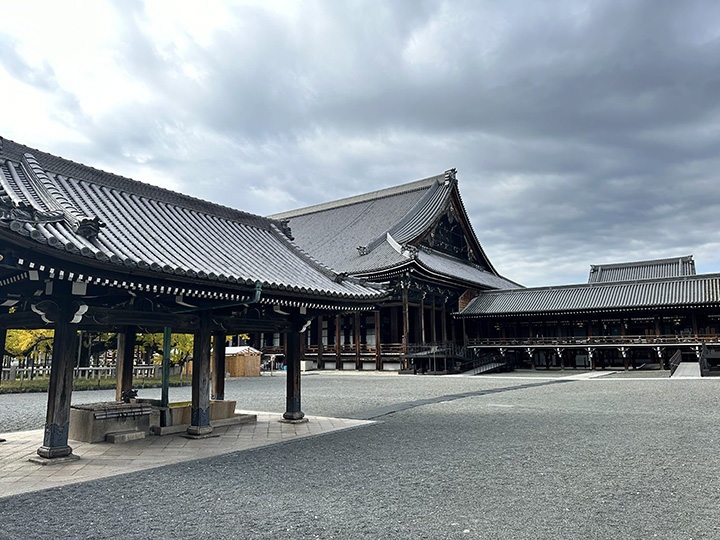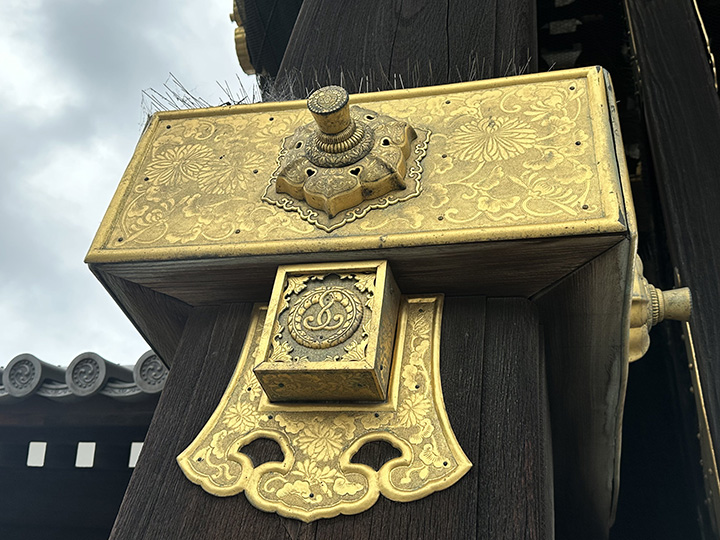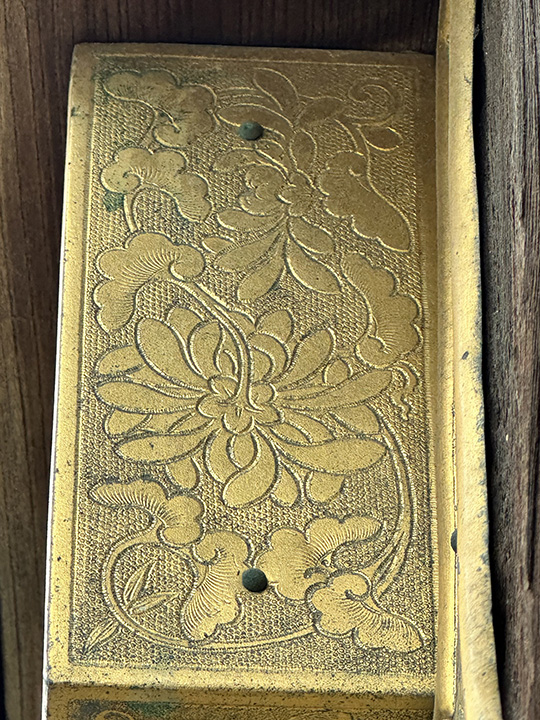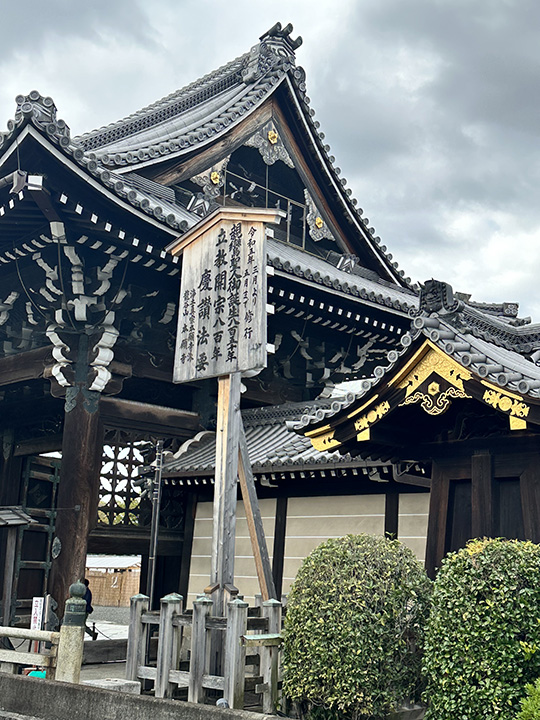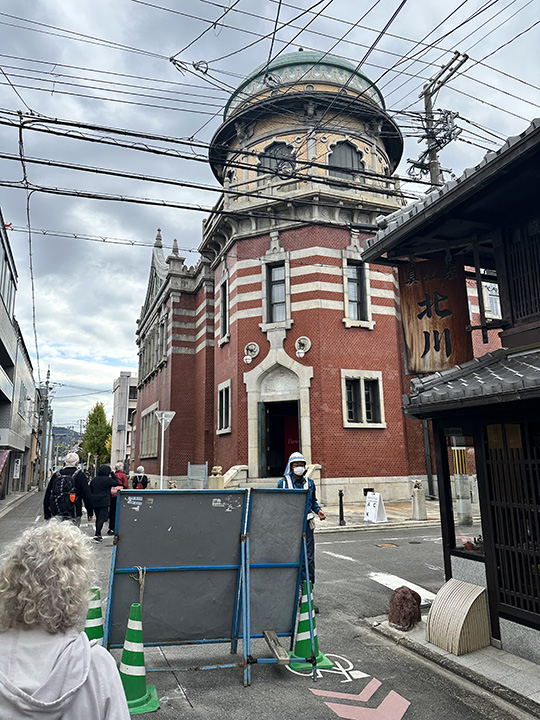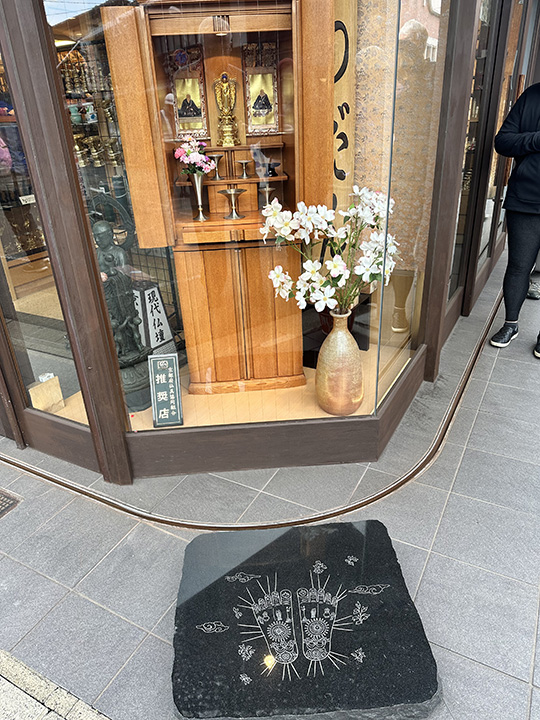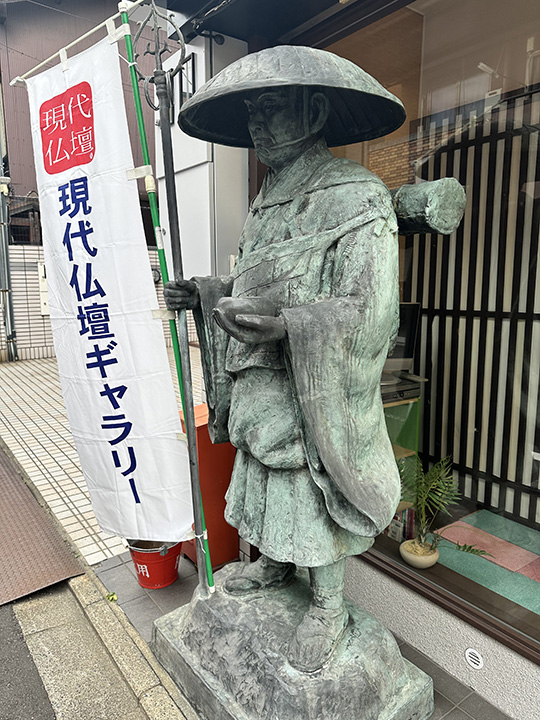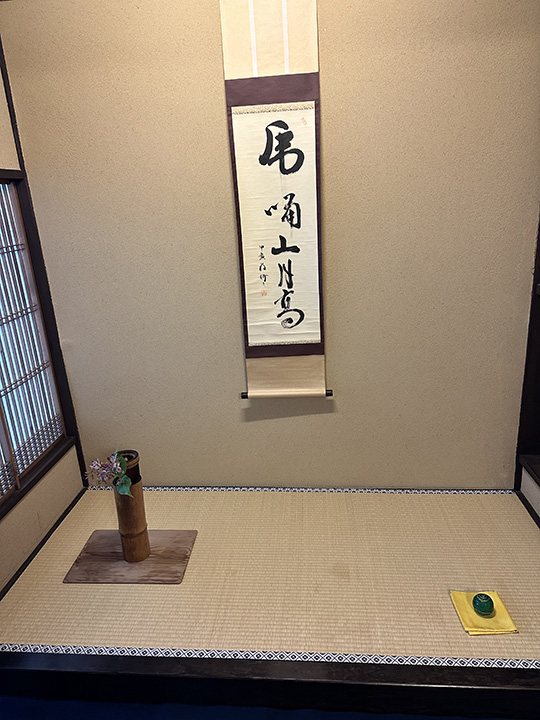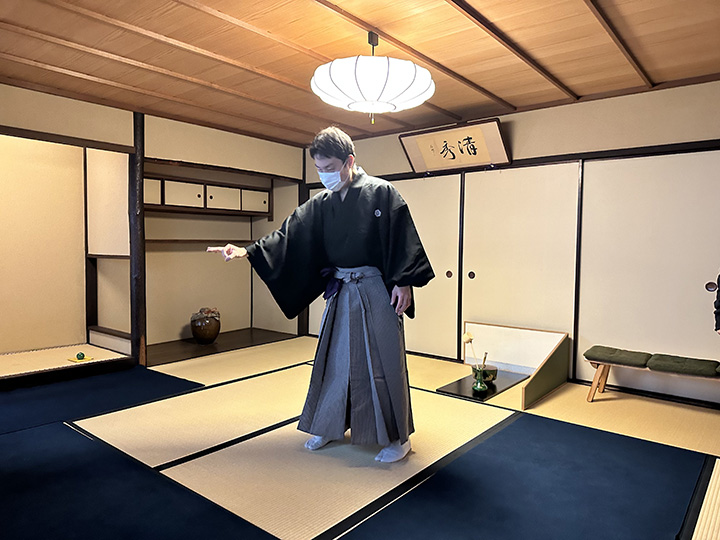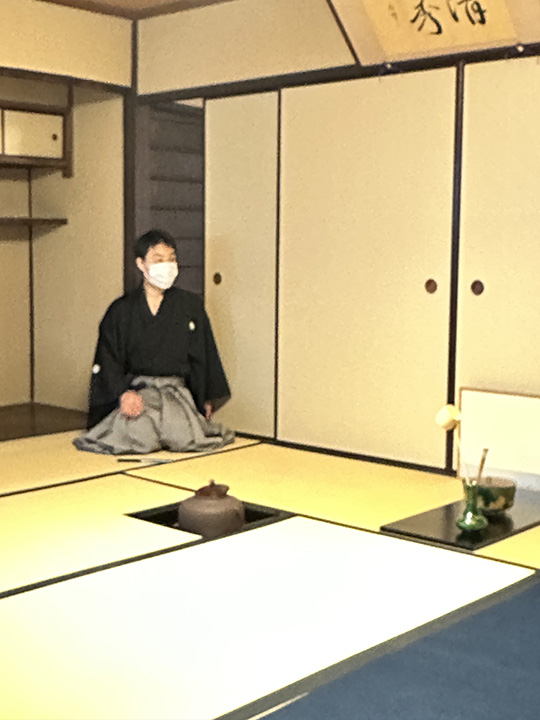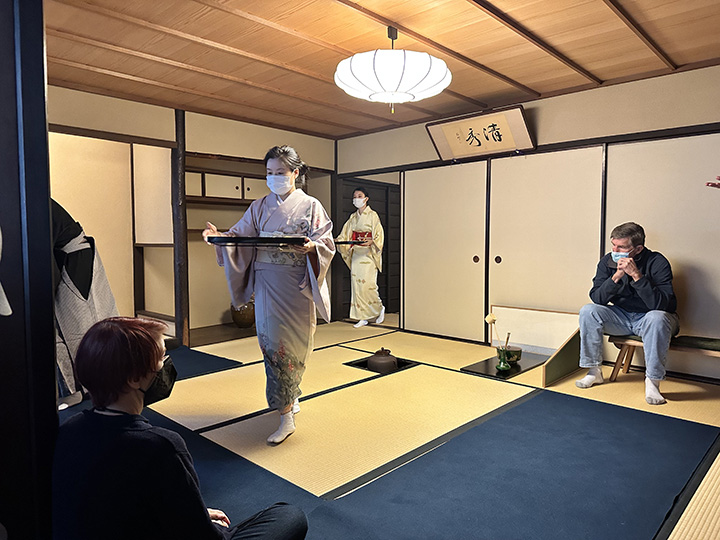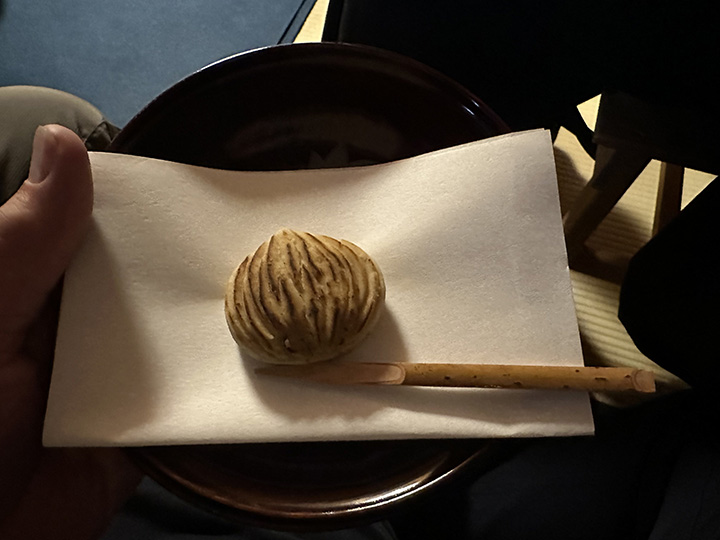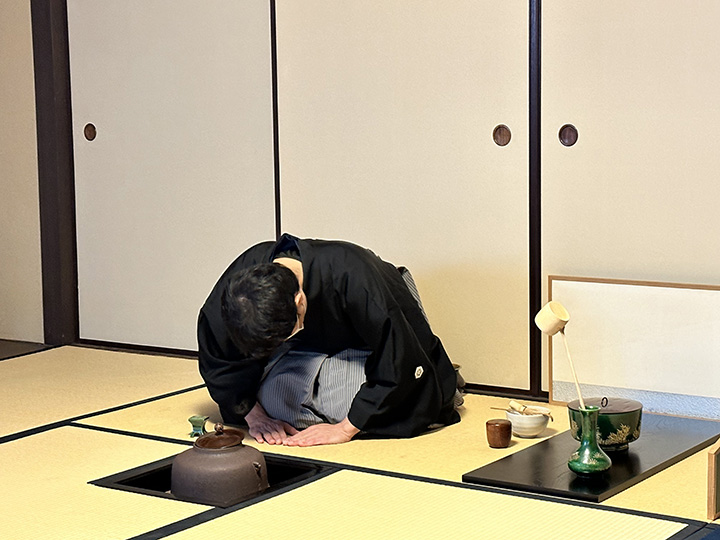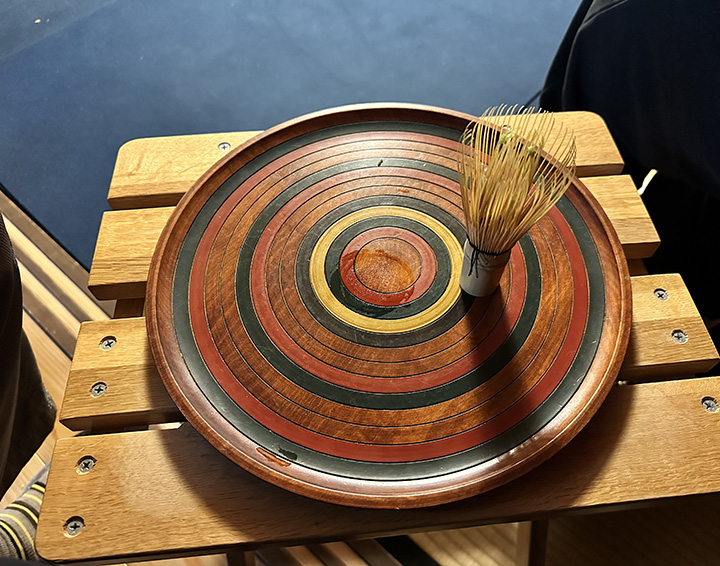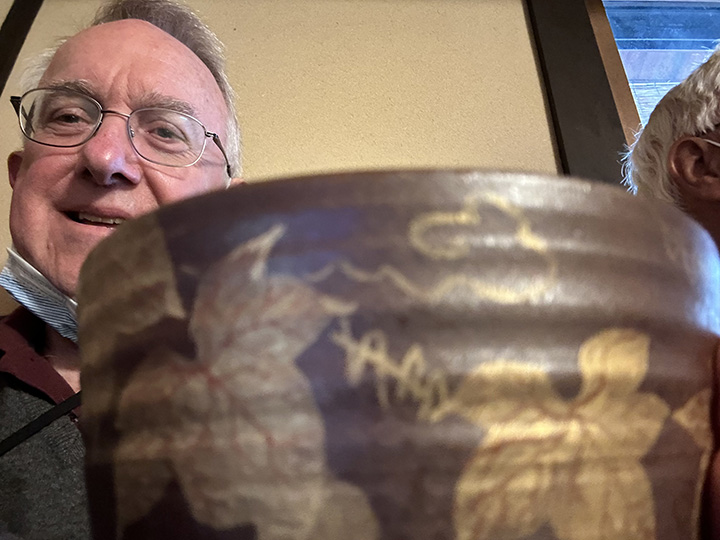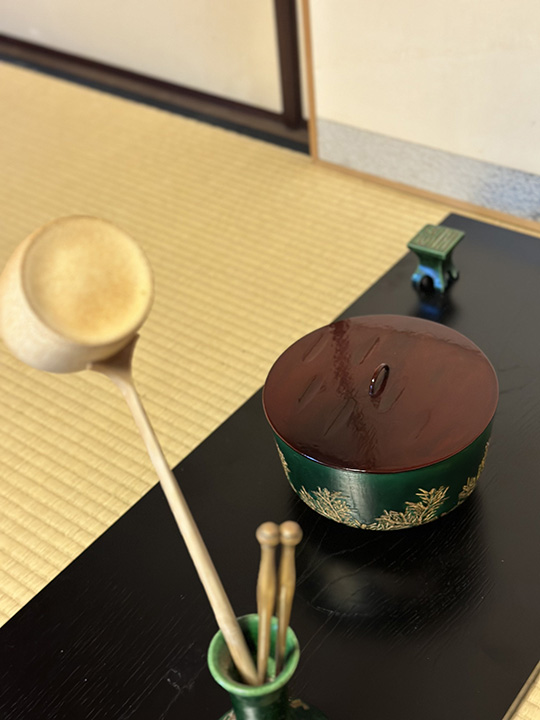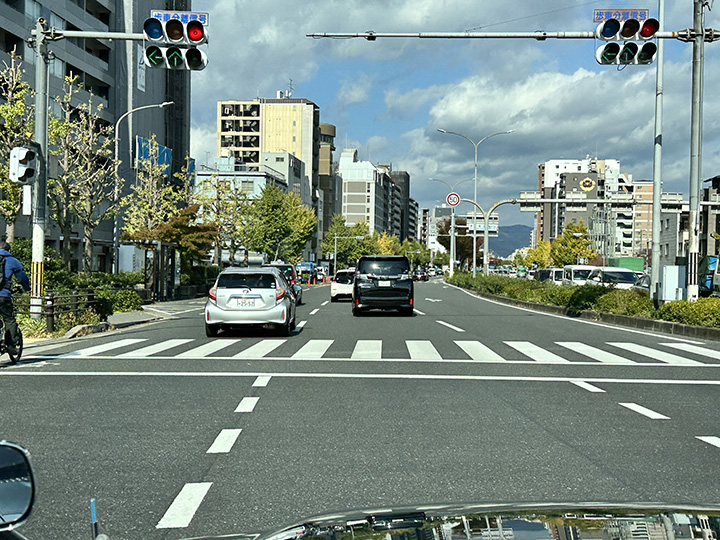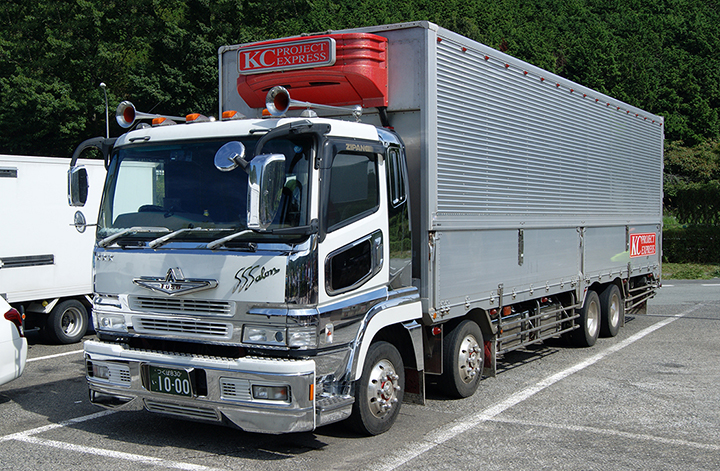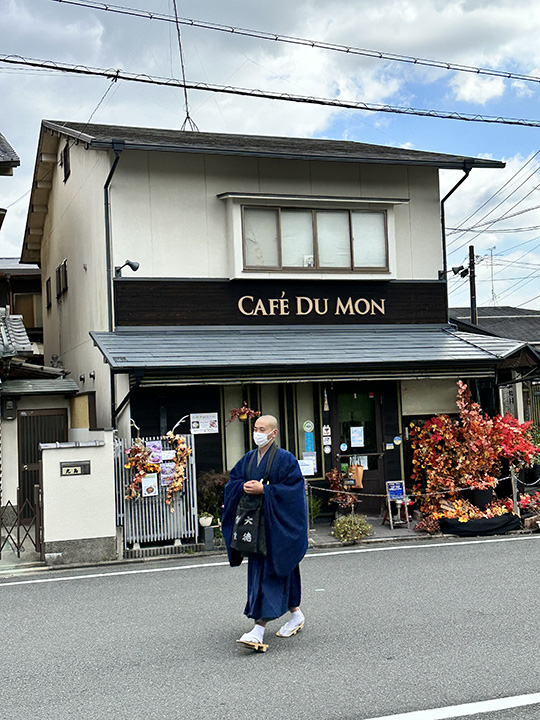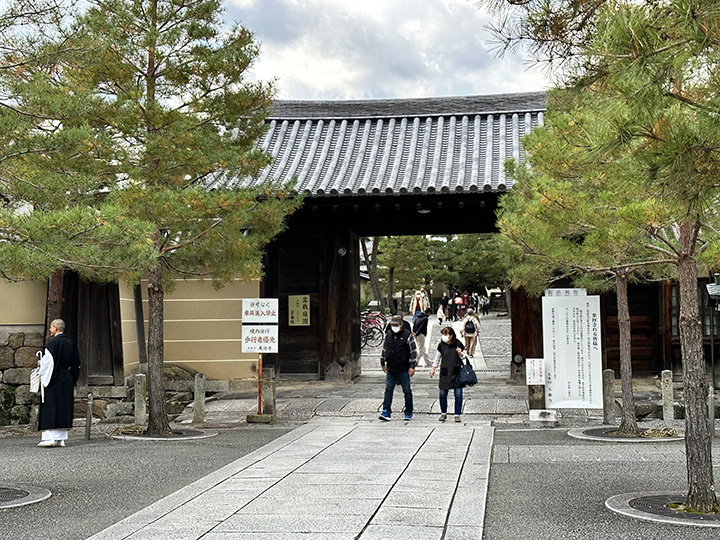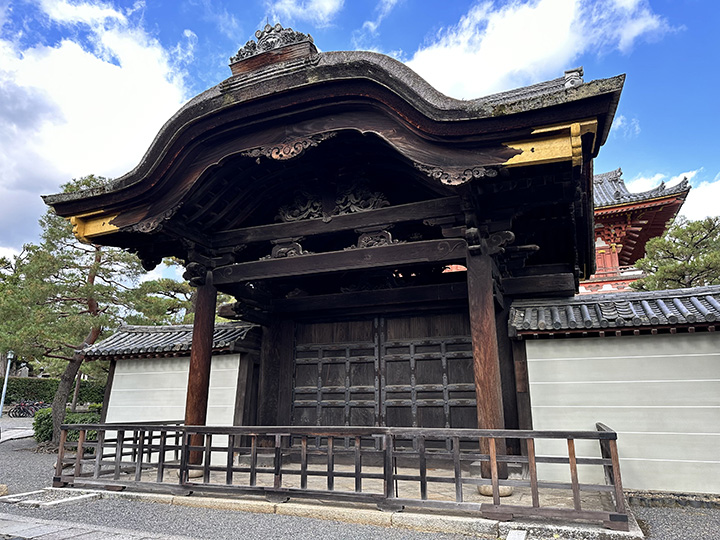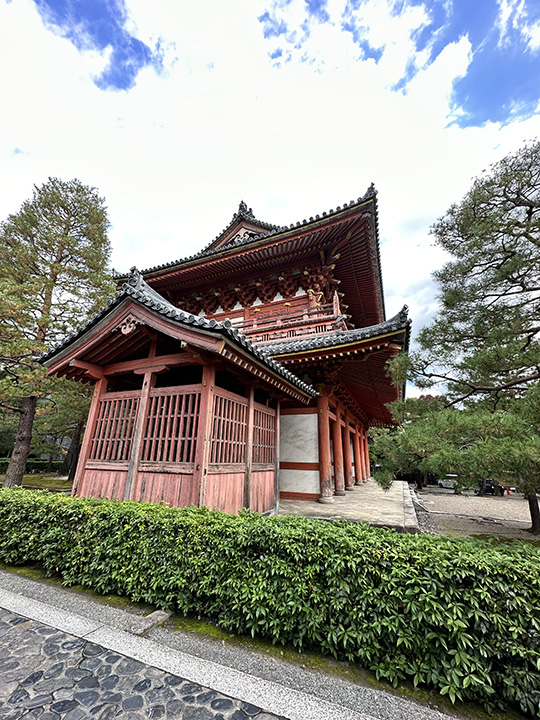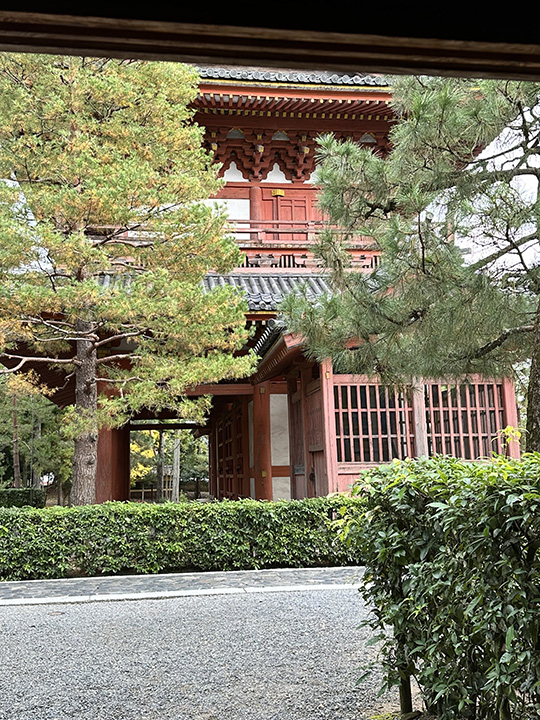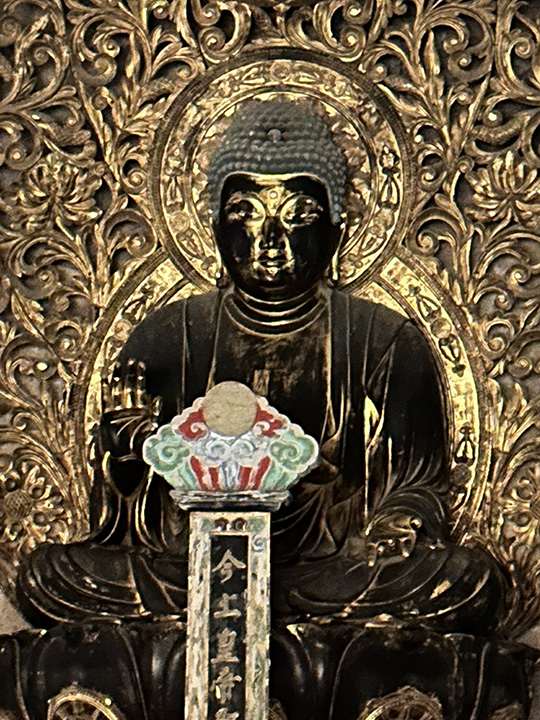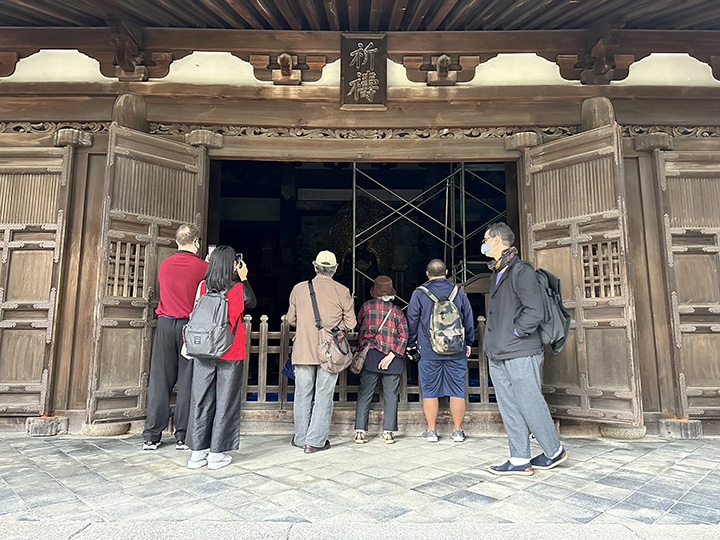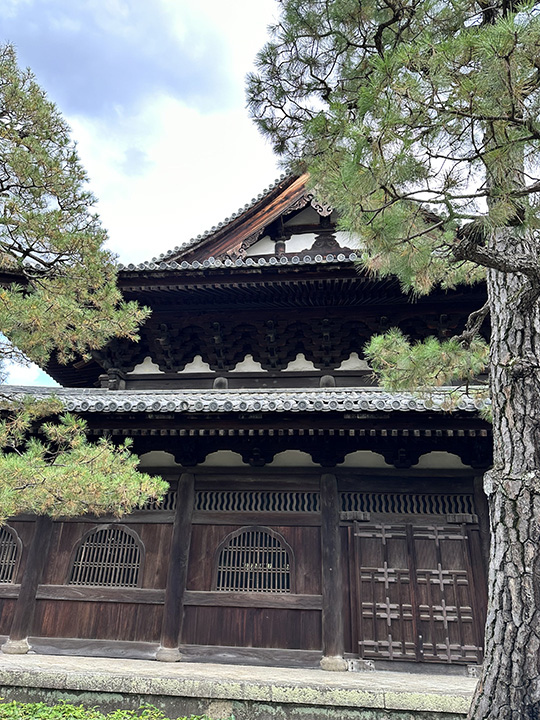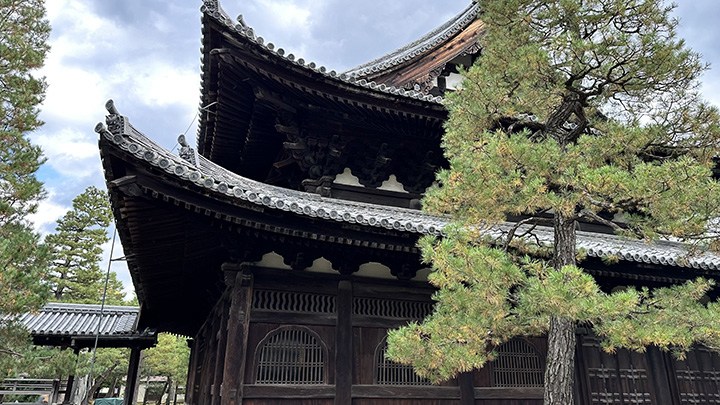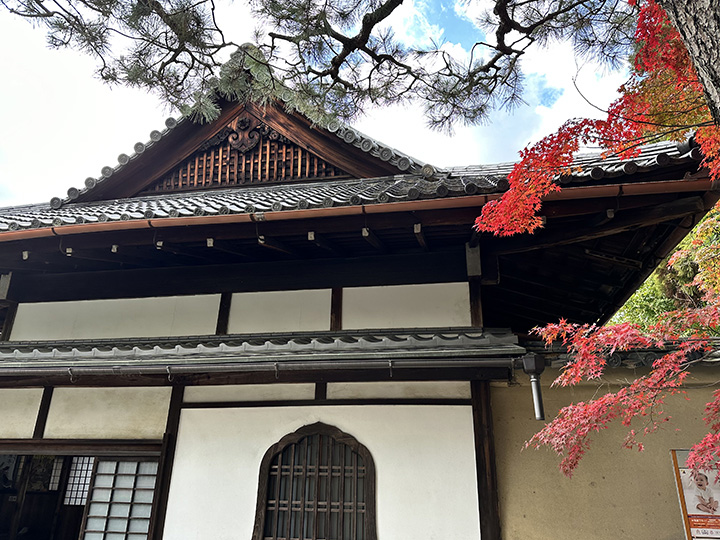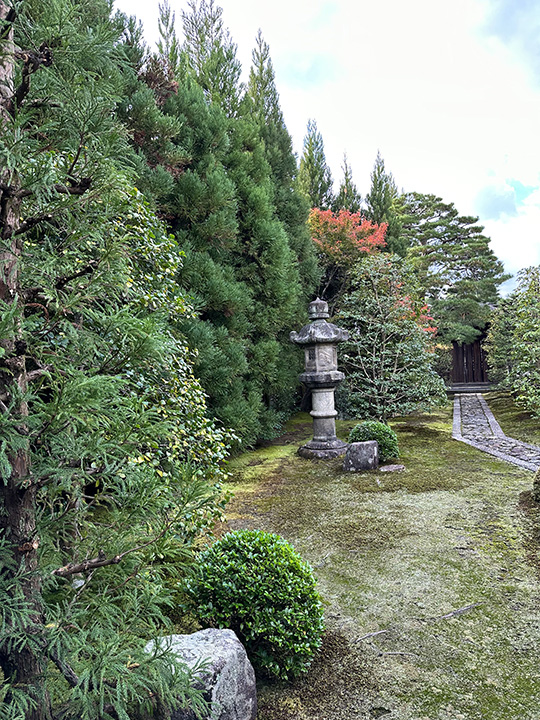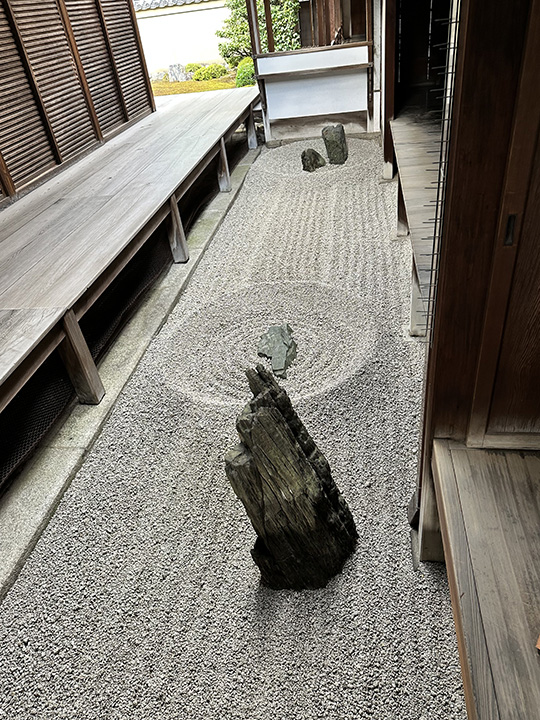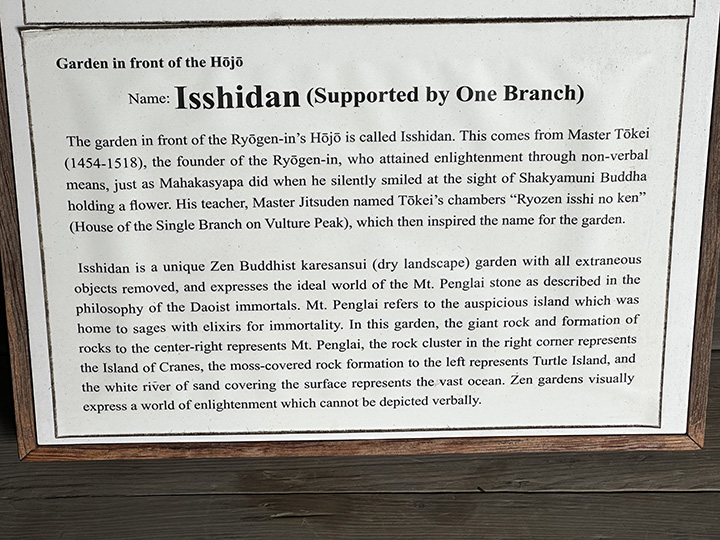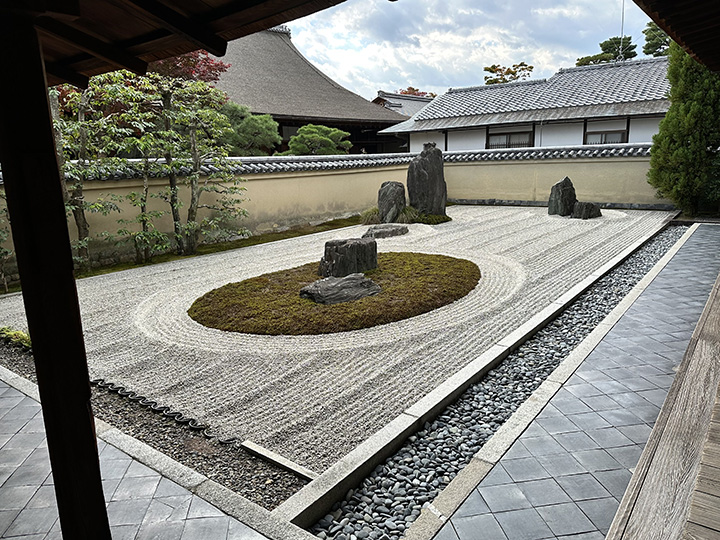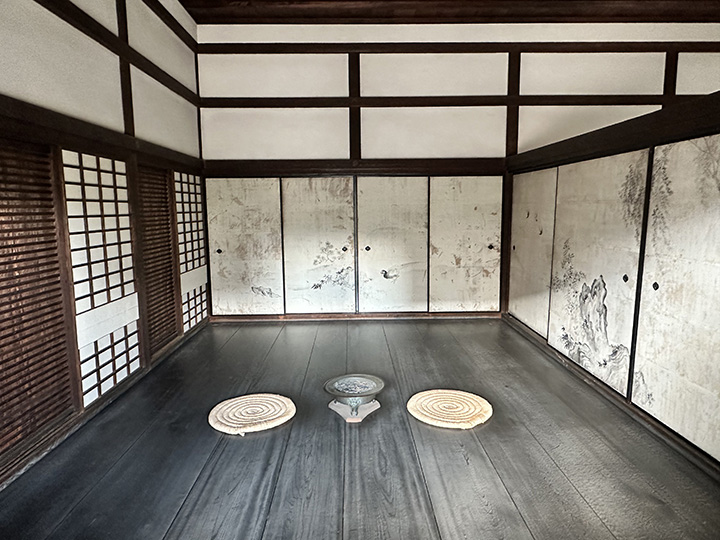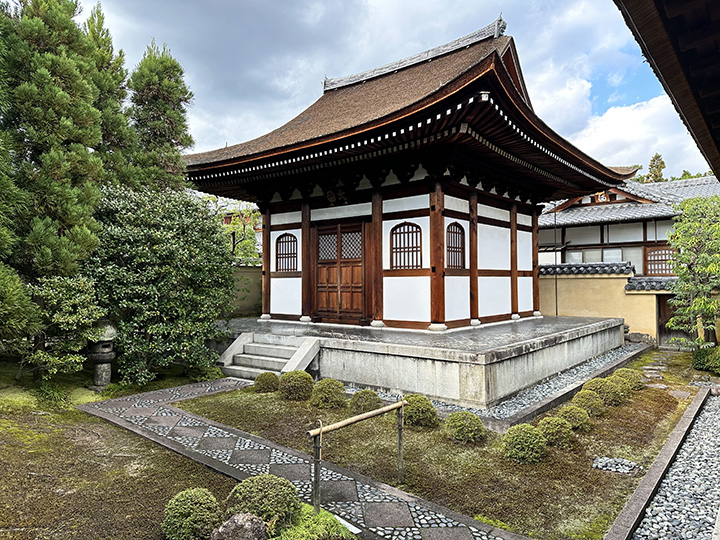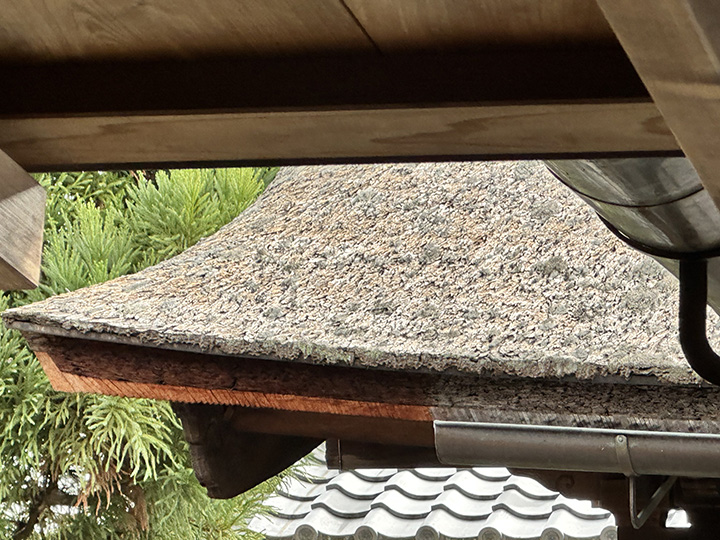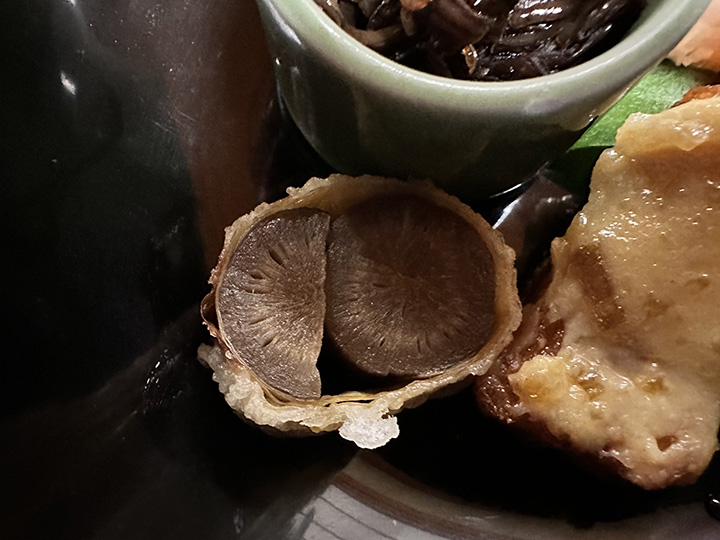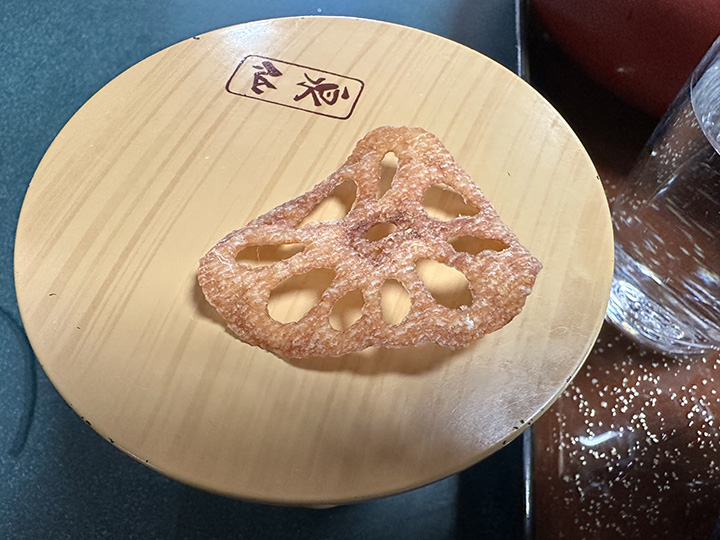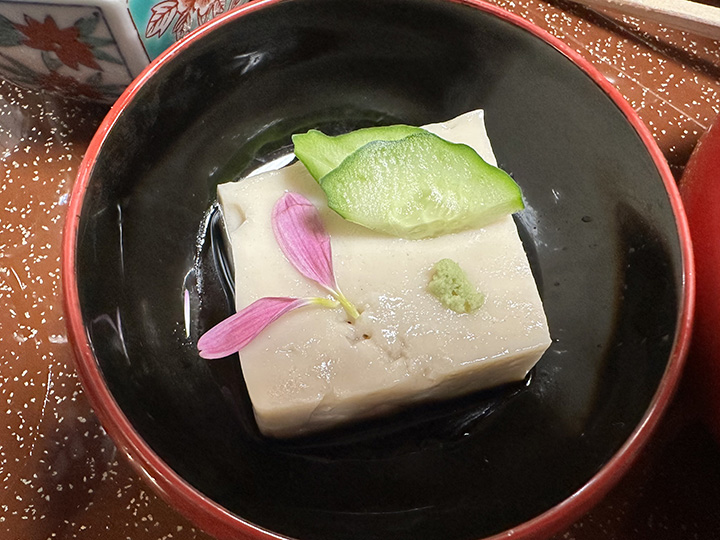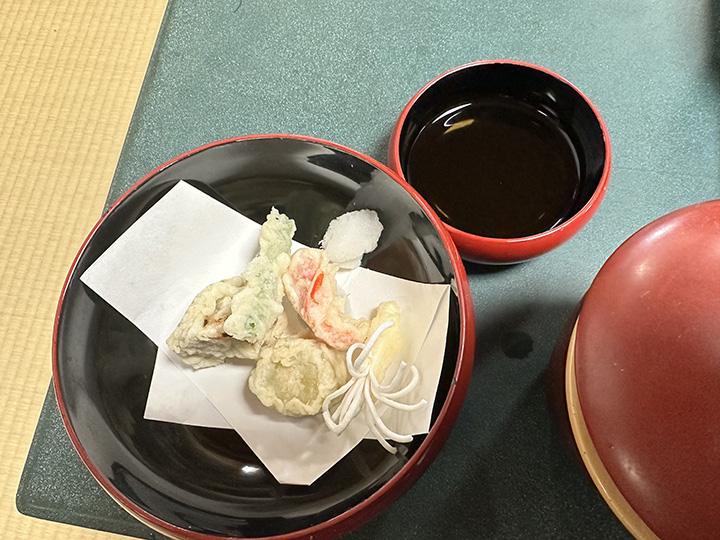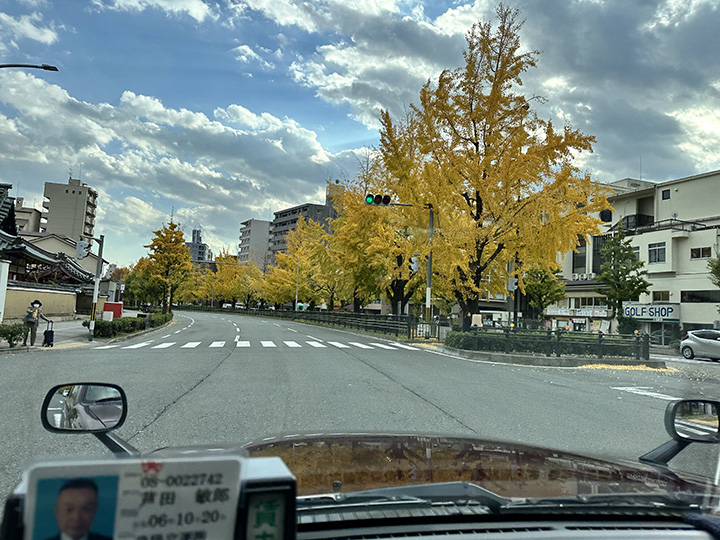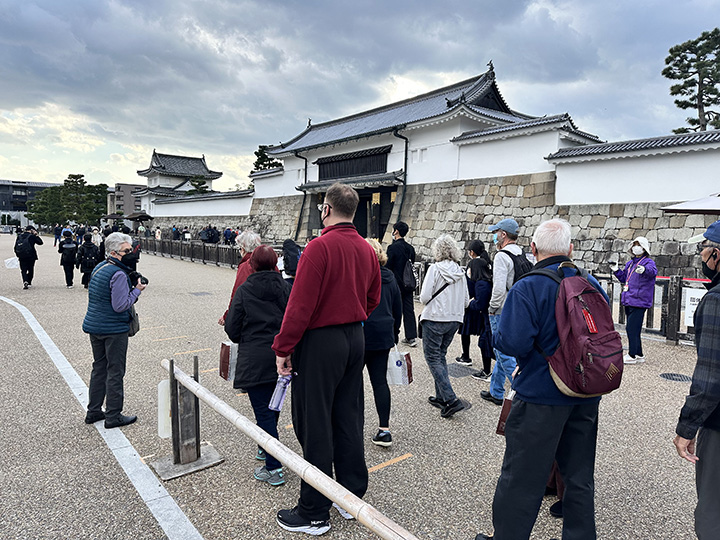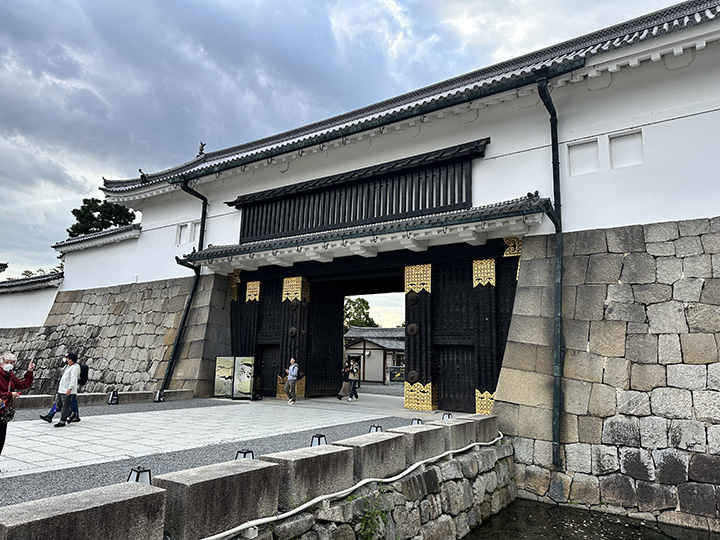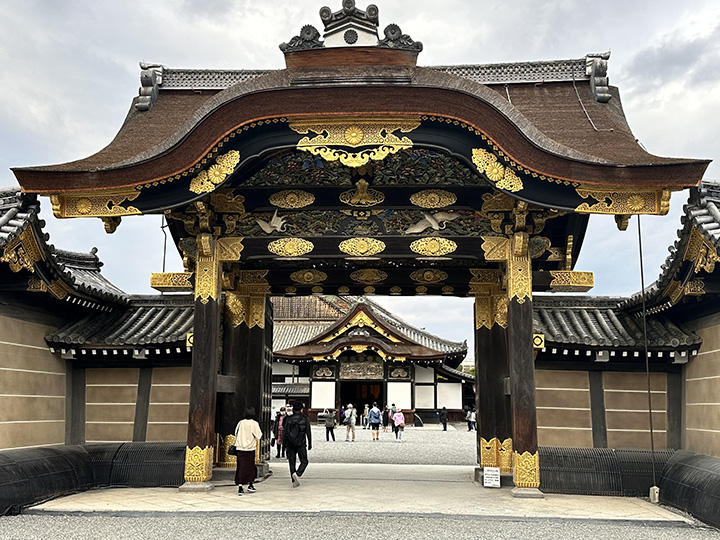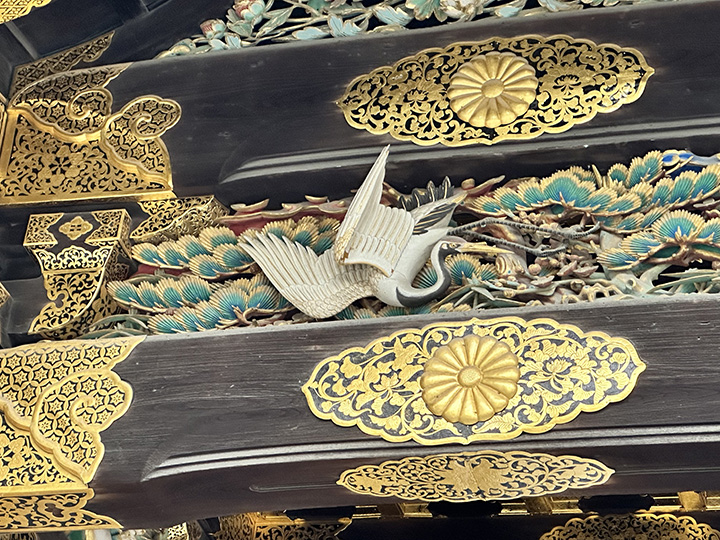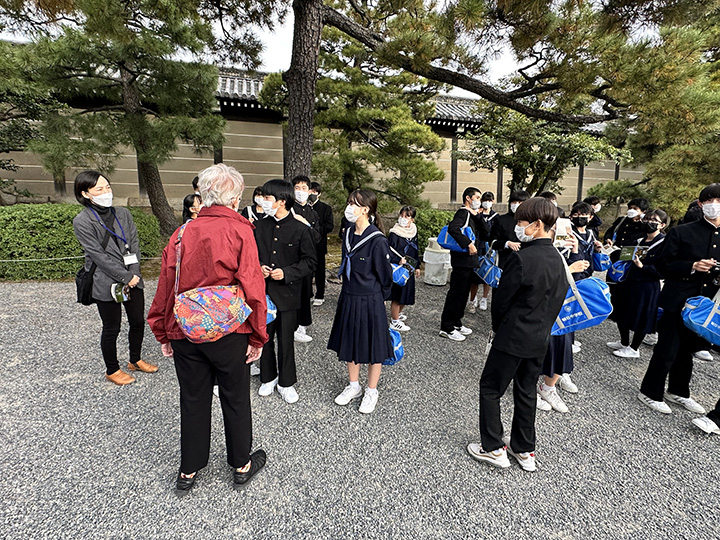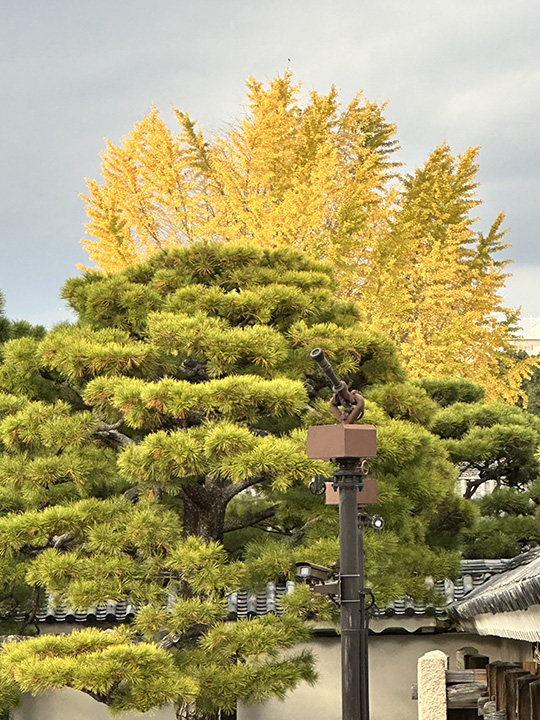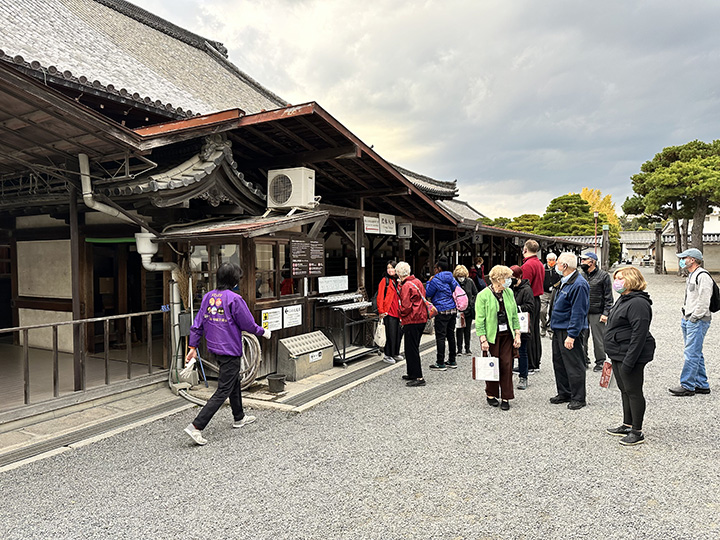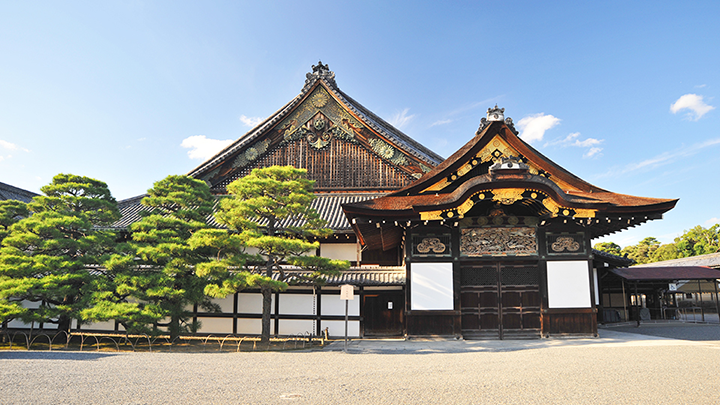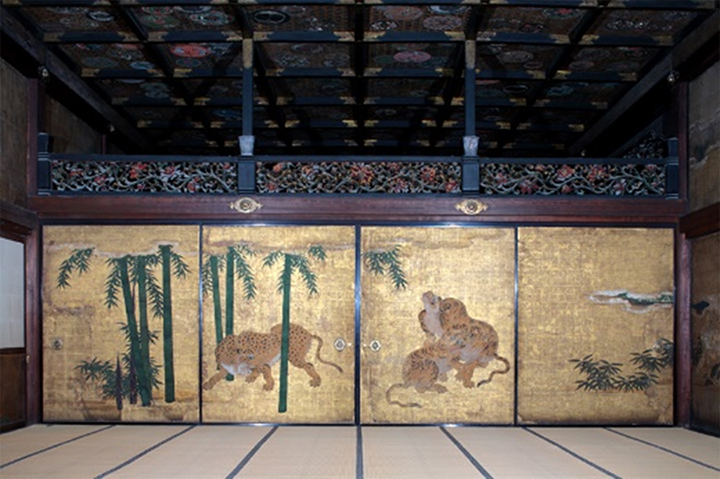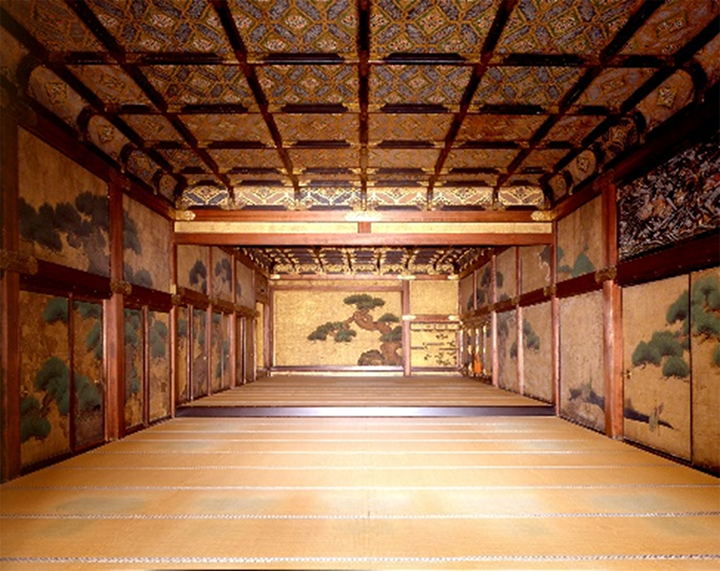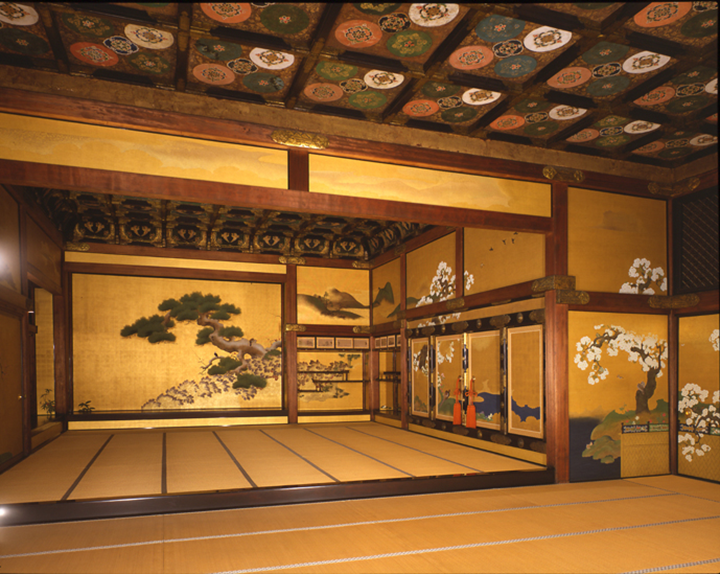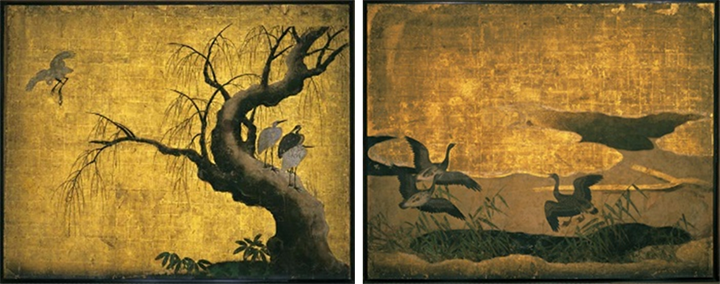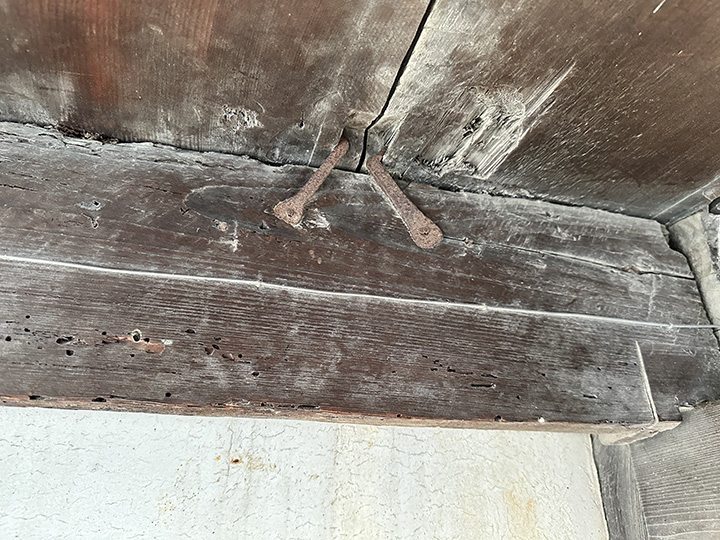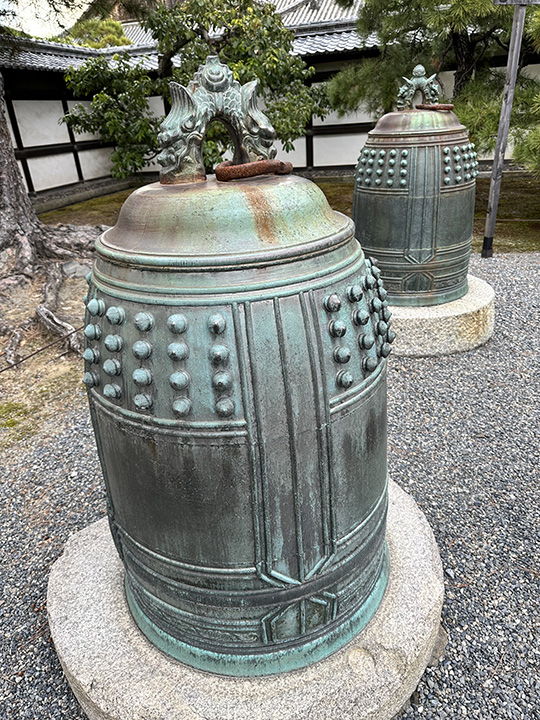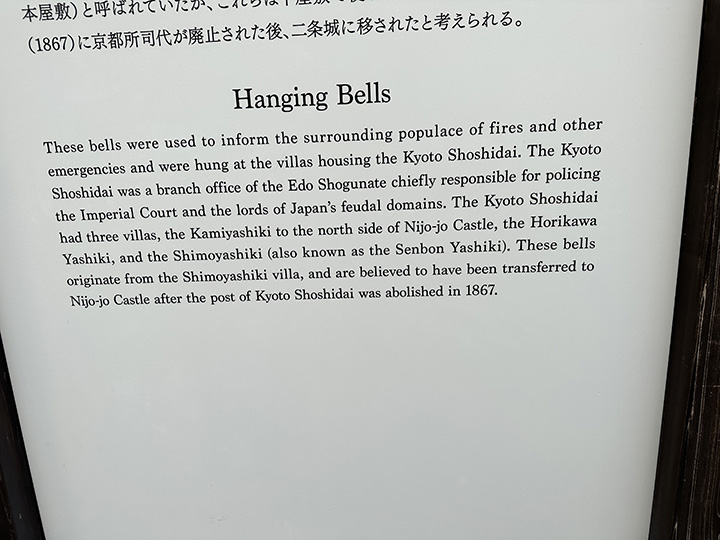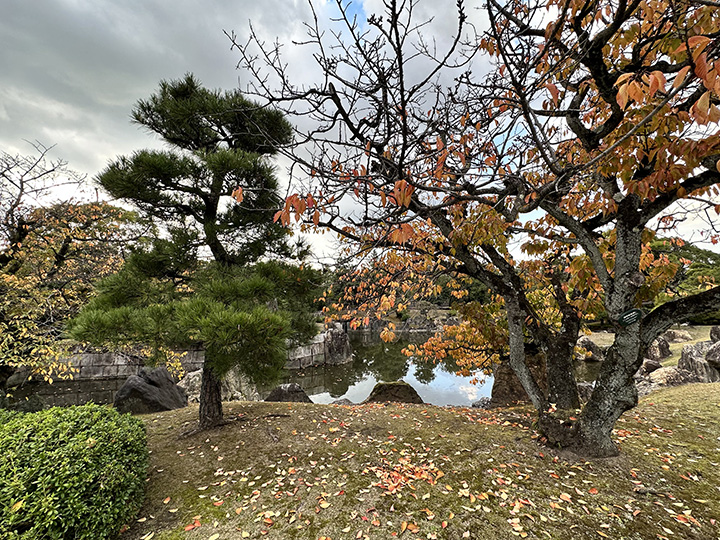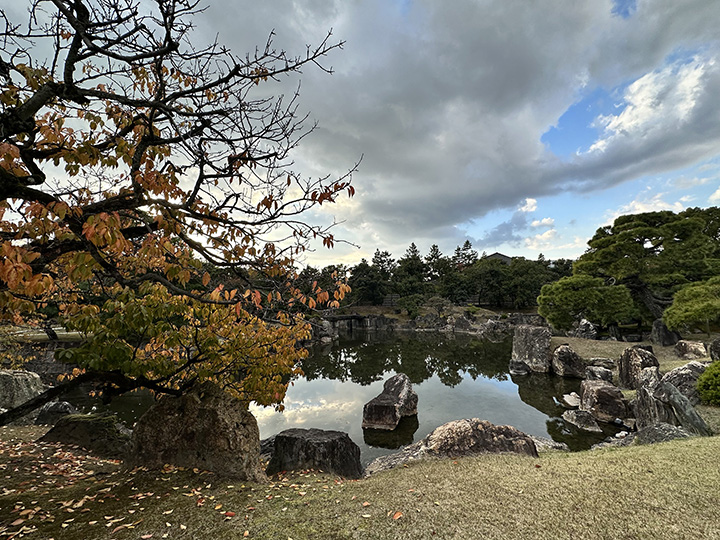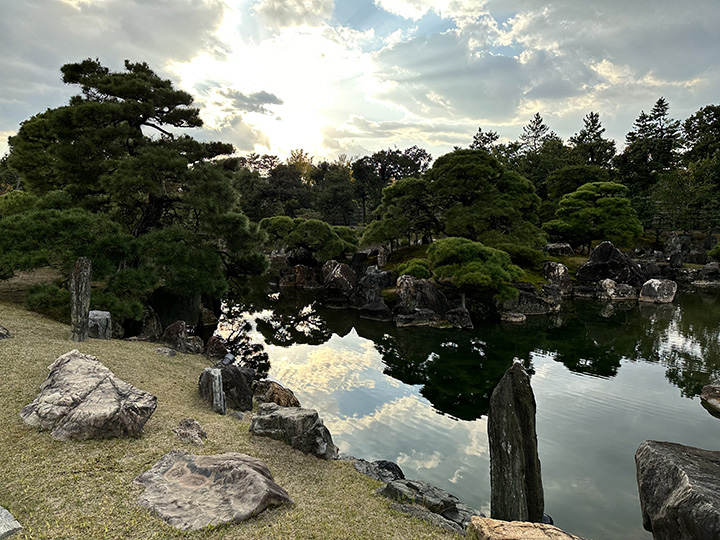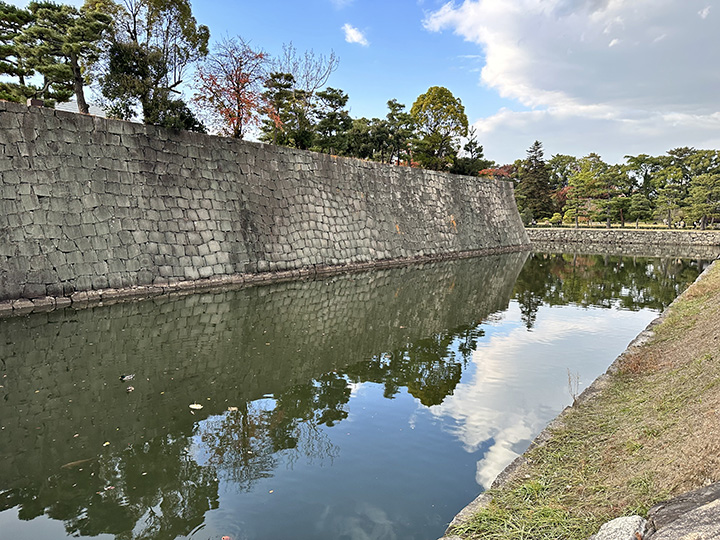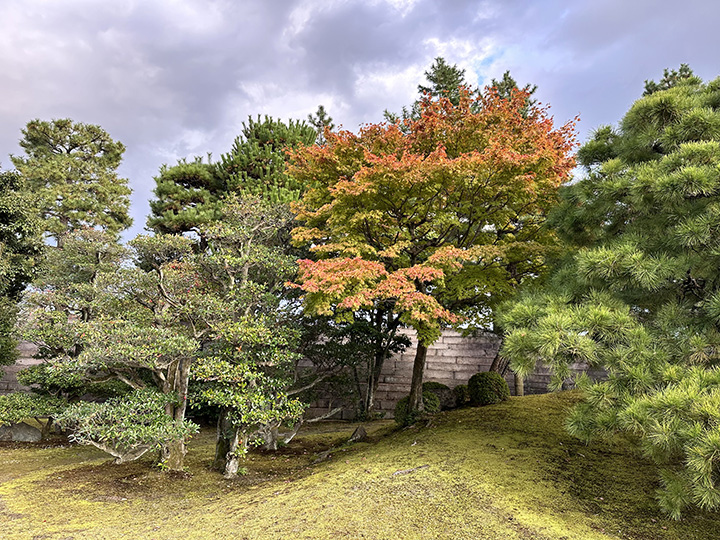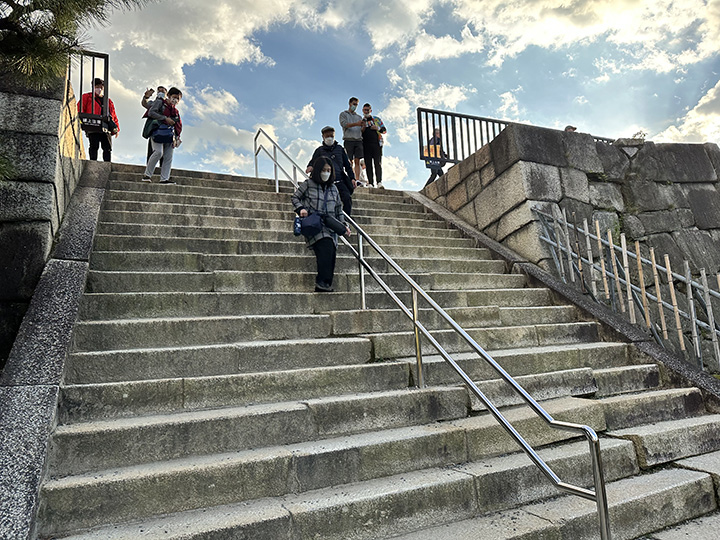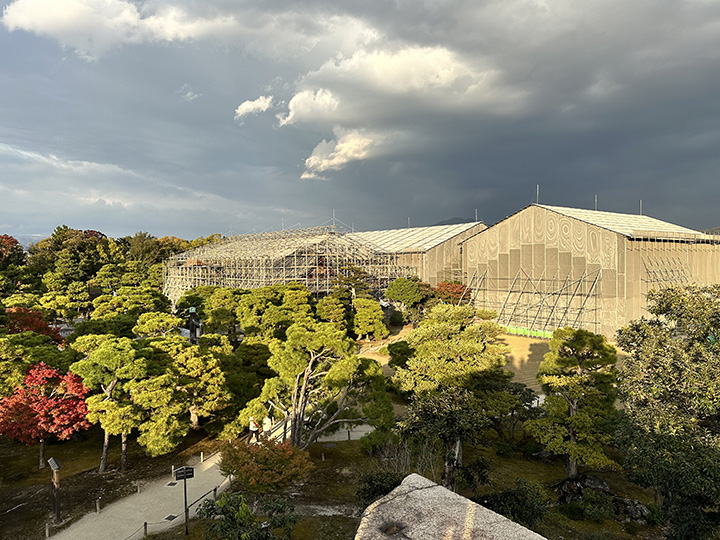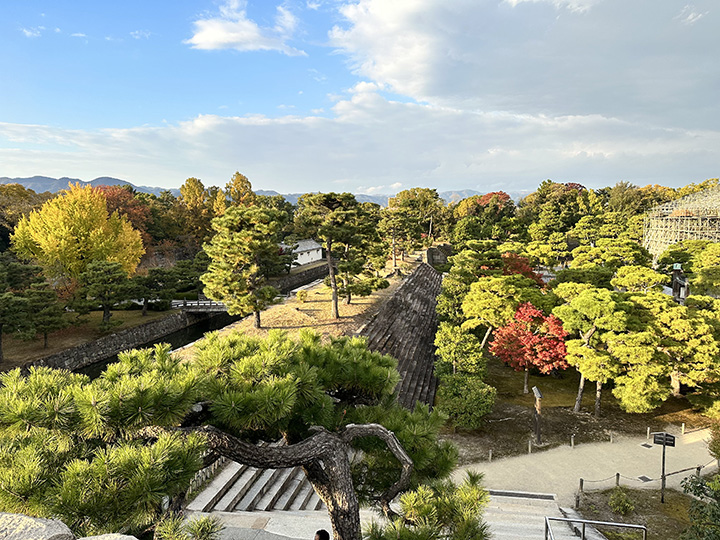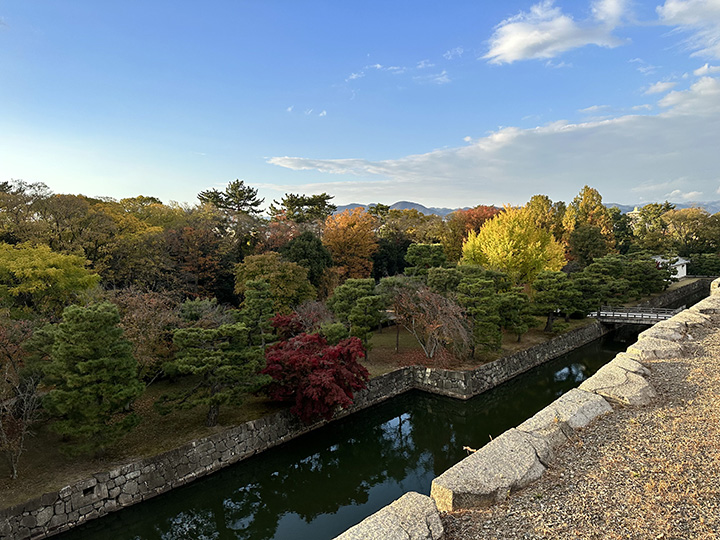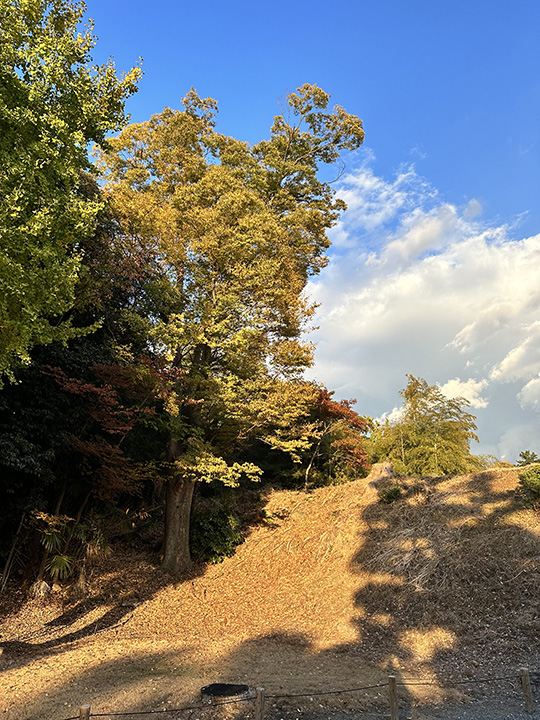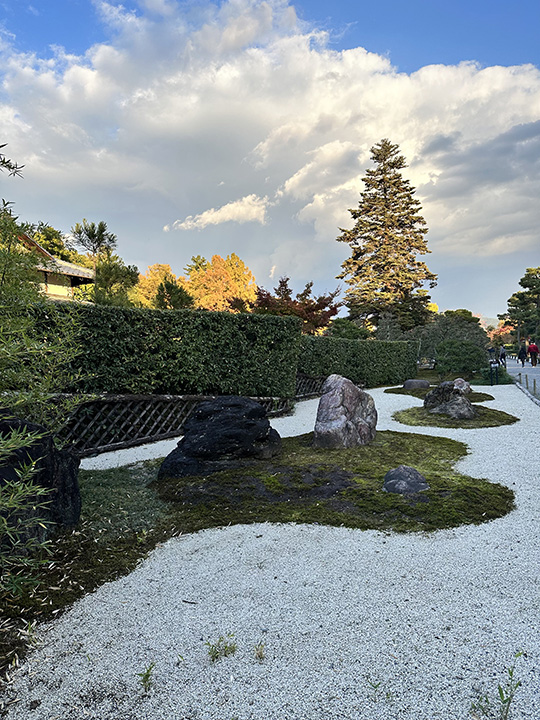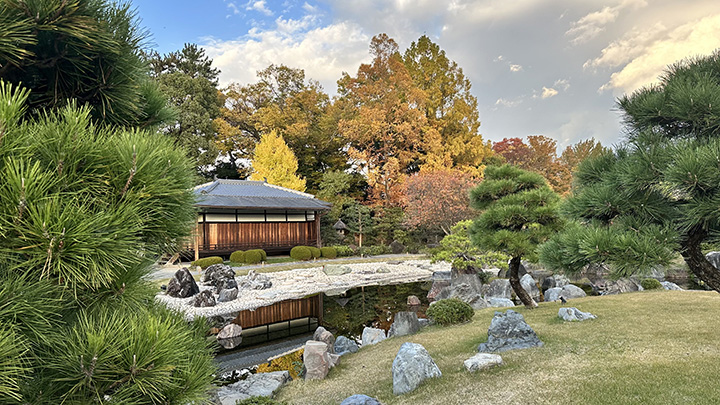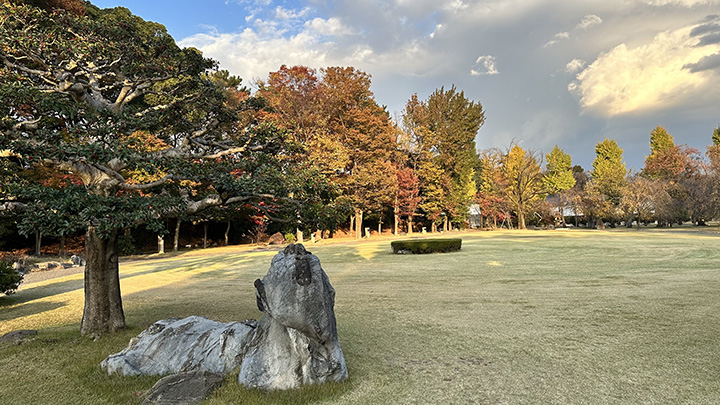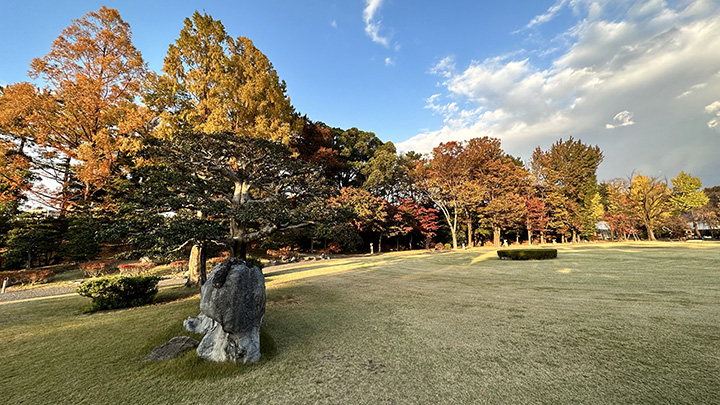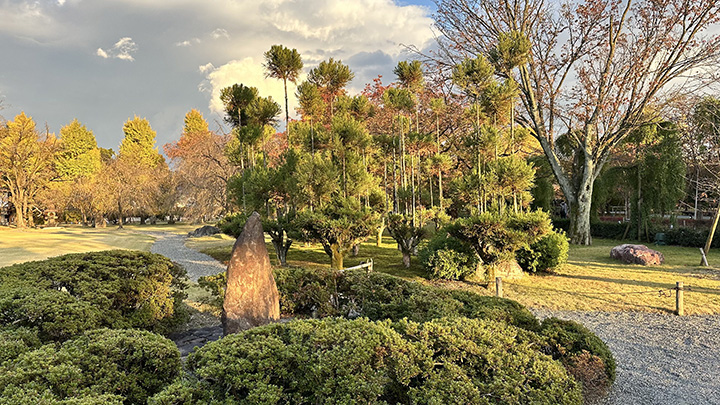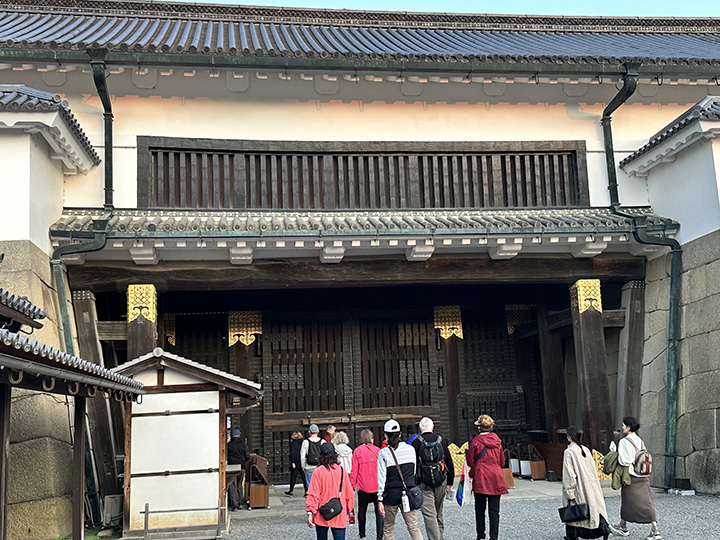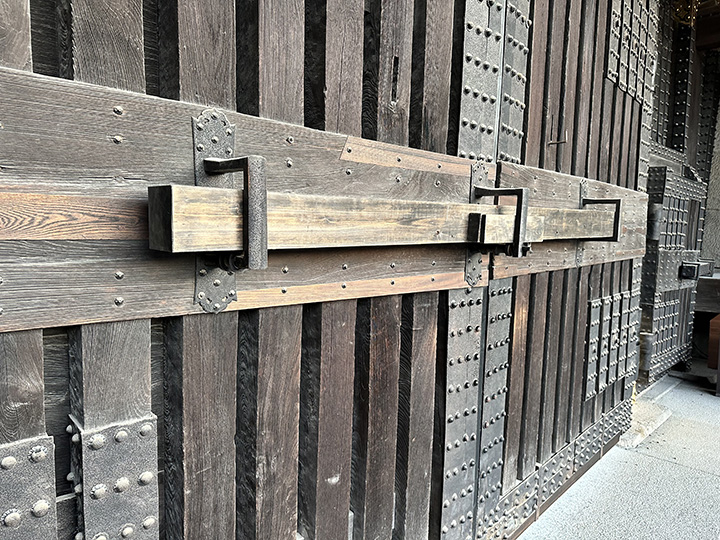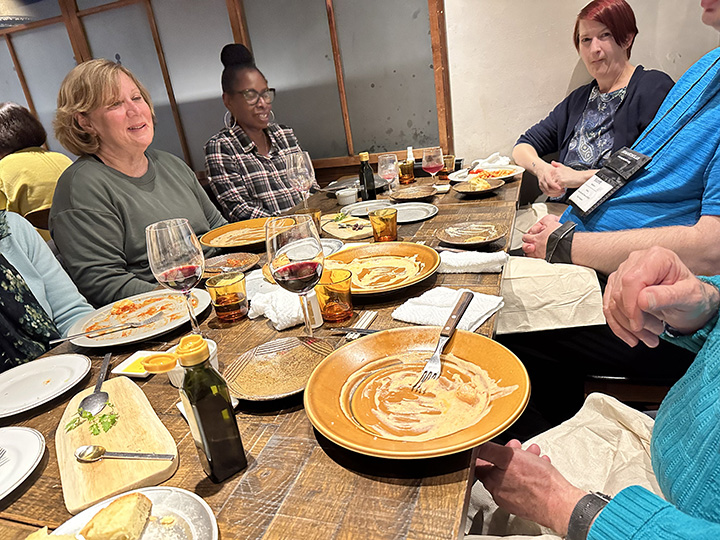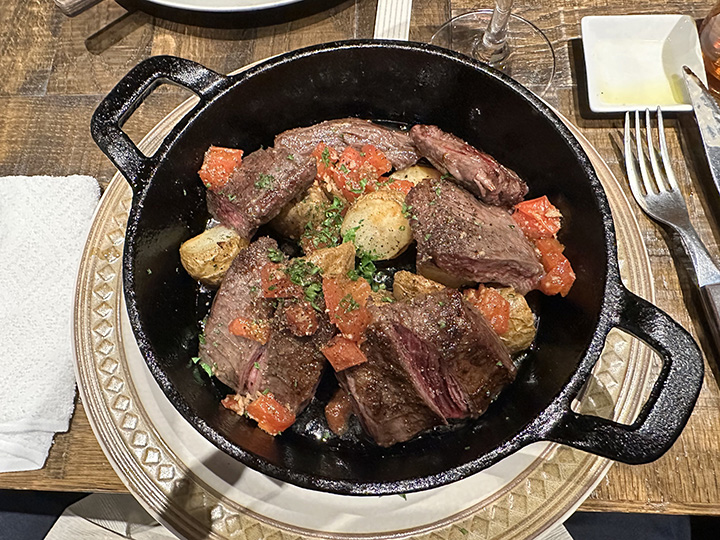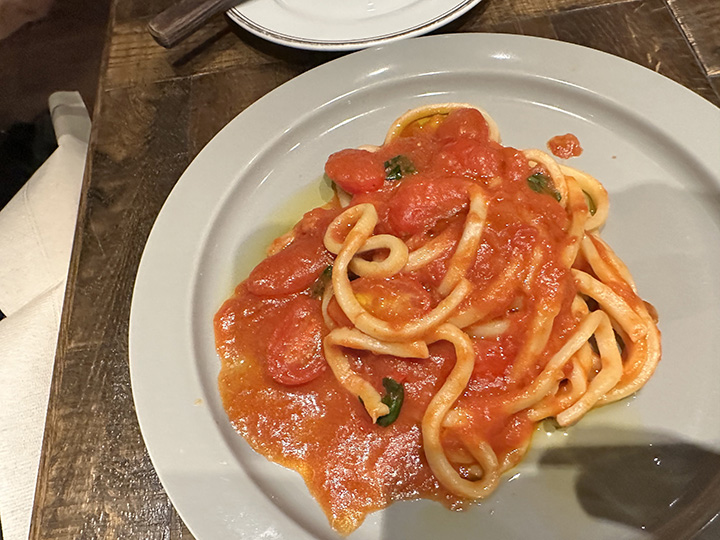|
Today we had a Spartan breakfast and rode taxis and walked and visited a Buddhist temple and another Buddhist temple and a shogun castle and a tea room and walked.
Here's breakfast at the hotel.
Well they did not skimp on the toast, but that was only about a
tablespoonful of scrambled eggs along with a slice of what looks
like American cheese believe it or not and some baloney and lettuce
and tomato. That was the hotel’s idea of a western breakfast. But it
was included in the price of the room, so who’s to complain?
You get one with nearly every meal. They come wrapped in plastic and they are made of porous paper and are slightly wet. You can use them to wipe your hands, and then you just hang onto it because it’s the only napkin you’re going to get.
The taxis are lined up to take us to our first temple.
Our Road Scholar guides have thought of everything. They gave us money in a pouch that contained directions for where we were going and money for taxi fare. It all worked just great.
Bill seems pleased we made it to the temple.
The karamon or karakado is a type of gate seen in Japanese architecture. It is characterized by the usage of karahafu, an undulating bargeboard peculiar to Japan. Karamon are often used at the entrances of Japanese castles, Buddhist temples and Shinto shrines, and have historically been a symbol of authority. Kathleen said this one had fallen into disrepair and has been restored recently.
Now it has lots of colorful, intricate carvings.
This gate really looks grand. The black lacquer comes from Japanese lacquer trees.
The complex looks big from the street. It's called Chion-in
(Monastery of Gratitude) and it's the headquarters of the Jōdo-shū
(Pure Land Sect) founded by Hōnen (1133–1212), who proclaimed that
sentient beings are reborn in Amida Buddha's Western Paradise (Pure
Land) by reciting the nembutsu, Amida Buddha's name.
The original temple was built in 1234 by Hōnen's disciple, Genchi (1183–1238) in memory of his master and was named Chion-in. The vast compounds of Chion-in include the site where Hōnen settled to disseminate his teachings and the site where he died.
For some reason they were having a chrysanthemum show in the temple courtyard. Probably had something to do with the fact that chrysanthemums are associated with Japanese emperors.
There were even bonsai chrysanthemums.
Nice bowl.
This is the Amida-do (Hall of Amida Buddha), which has been designated a National Treasure. It holds 800 people for special events. Next to it and connected by two corridors is the much larger Goei-do (Founder's Hall) which holds 1200 people for special events. It turned out that today they were having a special event in Goei-do, so we toured Amida-do. (Do means temple, shrine, hall, reception room; also shop, store.)
It's guarded by an elephant monster which has an identical head on its other end.
Some Buddhist monks showed up presumably to do Buddhist monk stuff.
Kathleen is explaining all this.
Let's take our shoes off and have a look inside.
A wooden image of Amida Buddha is enshrined in the central altar.
Nice chandelier.
On both sides of the central figure are paintings of six of the seven Pure Land Masters.
In the left alcove is a special painting of the seventh pure Land Master, Honen, the direct teacher of Shinran. In the right alcove is a scroll painting of Prince Shotoku, first patron of Japanese Buddhism.
Another nice chandelier.
The grounds are beautiful.
Like I said: there was some sort of event going on over there.
And just when it seemed nothing could disturb the tranquility of this Buddhist temple complex...
This happened. I think maybe it had something to do with that special event.
Time to go now.
Through a beautiful gate.
Nice.
Just look at the detail.
Daitoku-ji was lovely throughout.
Now we're walking a few blocks to a tea ceremony. That building was a Buddhist temple and now it is used as a museum. We didn't go in.
But we did admire the fancy bollards along the sidewalk.
While we were walking along we came upon a stone bearing footprints of the Buddha. Footprints of the Buddha abound throughout Asia, dating from various periods. Japanese author Motoji Niwa, who spent years tracking down the footprints in many Asian countries, estimates that he found more than 3,000 such footprints, among them about 300 in Japan. They often bear distinguishing marks, such as a Dharmachakra at the centre of the sole, or the 32, 108 or 132 auspicious signs of the Buddha, engraved or painted on the sole.
It's a statue of a wandering Buddhist monk carrying a shakujo. In Japan, the shakujo usually consists of a wooden handle or pole topped with a metal finial with two sections, each with three rings. When begging, a monk rattles this staff to announce his arrival at the door or gate of a household without breaking his vow of silence.
That's a tea shop. Road Scholar has arranged for us to learn all about the traditional Japanese tea ceremony.
And we are ready and willing to learn. Wait a minute...Bill, are your eyes closed?
The tea ceremony room is tastefully decorated.
Wikipedia says: The Japanese tea ceremony (known as sadō/chadō "The Way of Tea") is a Japanese cultural activity involving the ceremonial preparation and presentation of matcha, a fine green powder made of whole tea leaves.
While in the West it is known as "tea ceremony", it is seldom ceremonial in practice. Most often tea is served to family, friends, and associates; religious and ceremonial connotations are overstated in western spaces.
The ceremony begins.
To start we were given a very sweet little cookie confection because the tea we were about to drink would be bitter and we needed some sweetness in our mouths to counteract it.
I think he's meditating before making tea.
There is a good deal of formality to this. Our host is wearing his very best formal kimono.
The hot water is in that pot.
We were presented special whisks to froth our tea. They are called matcha.
There's a special back-and-forth motion that must be used when whisking green tea to a froth. Don is getting the hang of it.
That's a nice green froth.
Bill liked the tea. The aroma reminded him of the smell of wet grass freshly cut by a lawnmower. Yum.
Does Bill-san want a cookie?
Why yes, he does, and it was a good cookie.
Special utensils for a special ceremony.
Look what they sell in the tea store gift shop!
It's a hogicha ice cream cone. It is made with green tea that has been toasted brown and it was delicious.
And off we go on another taxi ride.
I noticed in Japan that many vehicles boasted what seemed to me excessive amounts of chrome, especially in front. I guess it's the current style.
I grabbed this pic off the internet to illustrate what I'm talking about. Maybe I can find a better illustration if I look a little harder. Still, there's lots of chrome on the front of that truck.
We have arrived at the Daitoku-ji shogun castle where there is a small cafe across the street. Bill was dreaming of chicory coffee and beignets when he was distracted by a monk.
There's the entrance. Daitoku-ji (the ‘temple of Great Virtue’) is a Buddhist temple, one of fourteen autonomous branches of the Rinzai school of Japanese Zen.
Kathleen helps us figure out how to get around the grounds.
Imperial emissary gate (Chokushi-mon)
There are elaborate buildings and a magnificent garden here.
Daitoku-ji is famed for both its historical associations and its many beautiful Zen gardens. There are actually 22 sub-temples within the compound's walls, but only four of these are open on a regular basis.
Amitabha Golden Statue, Amidado Hall, Chion-in
Buddha gets his close-up.
They're working on the place.
The grounds were studded with lovely buildings.
With curvy roofs.
This could be the Ohojo Large Guest House. Maybe. But whatever it is, it's pretty.
Nice garden.
This garden is called Kodatei, or Aun no Sekitei (A-Un Stone
Garden). It is located along the eaves of the shoin (study.) "Koda"
is the Japanese name of a Chinese river, the Hutou, which flowed by
the temple where Master Linji, the founder of the Rinzai sect of Zen
Buddhism resided.
An interesting feature inside the temple is the very squeaky boards, an example of a nightingale floor (so-called because of the chirping sound). The wooden boards were built with metal ends that would rub against the metal joints they were attached to, created a piercing noise as people step on them. This was intentionally done so that when the Tokugawa family stayed at the temple, they could detect unwanted intruders at night. That still image above has an audio file attached. Click on the picture and you can listen (carefully) for the sound of squeaky floors under the chatter of the tourists.
Well, it is indeed small.
It's pretty and I think that's going to be about it for rock gardens today.
Danna-no-Ma is the "Patrons' Room" where the donors who provided financial and other types of support the temple, the abbot, and other members of the temple met with the abbot and socialized over tea.
These buildings have interesting roofs.
See the tightly packed wood?
The roofs are made of thinly shaved cedar held together with a little wooden pegs that look much like toothpicks.
Green and gold. Pretty.
Lunchtime! Some of us will sit traditionally on the floor with cushions.
Others of us, those with bad knees, will sit on low chairs. When you travel with old people, bad knees are plentiful. I even have one myself.
Here is our Buddhist vegetarian lunch.
That's burdock root wrapped in tofu. It's remarkable to me only because my first house when a baby was on Burdock Ave. I hadn't thought about where the word came from until this trip.
That's a slice of fried lotus stem. I think.
That's tofu with flower petals and other stuff on top.
That's tempura fried veggies. All in all it was really a fine lunch elegantly presented. I kept telling myself that I was fortunate to be able to have interesting experiences like this.
And we're off to another interesting experience.
Taxi drivers wear white gloves. Japan never ceases to amaze.
Nijo Castle, or Nijo-jo as it is called in Japanese, is more than 400 years old and was completed back in 1603, at the beginning of the Edo period. The Edo period also called the Tokugawa period, lasted between 1603 and 1868. During this period, Japan was under the rule of the Tokugawa shogunate.
In 1601, Tokugawa Ieyasu, the founder of the Tokugawa shogunate, ordered all the feudal lords in western Japan to contribute to the construction of Nijo Castle, which was completed during the reign of Tokugawa Iemitsu in 1626. While the castle was being built, a portion of land from the partially abandoned Shinsenen Garden (originally part of the imperial palace and located south) was absorbed, and its abundant water was used in the castle gardens and ponds. Parts of Fushimi Castle, such as the main tower and the karamon, were moved here in 1625–26. Nijo Castle was built as the Kyoto residence of the Tokugawa shoguns. The Tokugawa shogunate used Edo as the capital city, but Kyoto continued to be the home of the Imperial Court. Kyoto Imperial Palace is located north-east of Nijo Castle.
The grand and impressive Karamon Gate is the entrance gate to Ninomaru-Goten Palace.
The gate is massive and beautifully decorated with intricate golden carvings of cranes, pine, bamboo, and plum blossoms, all symbolizing longevity.
The gate is stunning and shows the high status of the Tokugawa family. It was fully restored and repainted in 2013 and now shines like ever before.
Kathleen has spotted some students and is encouraging them to practice their English with her.
Some of the foliage requires sunglasses.
This is where we took off our shoes to enter the palace. They didn't permit photography inside, so I'll find some photos on the internet.
The Palace consists of six connected buildings, and is archetypical of the shoin-zukuri architectural style, which was perfected at the beginning of the Edo period (1603–1867). The Palace is designated as a National Treasure since it is the only surviving example of a fortified palace complex. The interiors of the Palace are magnificently decorated with wall paintings by the Kano School, intricately carved transoms between the rooms, and exquisite metalwork fittings, befitting the Kyoto residence of the Shogun.
The first and largest section of the Palace, the Tozamurai served as waiting rooms for feudal lords when they visited the Palace. The first thing that the visitor to the Palace saw, the grandeur of these rooms, with their paintings on gold of ferocious tigers, was designed to express the authority of the Tokugawa Shogun. These rooms were also known as the Tora-no-ma, or Tiger rooms, for their wall paintings.
The openwork carvings between the rooms in this and the other rooms of the Ohiroma are particularly noteworthy, being carved differently on either side of a single piece of cypress wood over 35 cm thick. Also worth noting are the decorative metalwork fittings adorning the horizontal beams (nageshi) of the room. They are made of decorated and gilt copper, in the form of bouquets of flowers wrapped in paper as a gift.
The Ohiroma, or Grand Hall, is the main section of the Palace, and contains the official audience rooms where the Shogun met with feudal lords and the Imperial Court nobility. The two main rooms are the First Room, which is the upper level room, and the Second Room, on the lower level. During audiences, the Shogun is believed to have sat in the First Room, facing south, as rulers in Japan traditionally did. The First Room is fitted with an alcove (toko-no-ma), where a triptych of hanging scrolls would have hung, and staggered shelves (chigaidana, to the right of the toko-no-ma), where works of art would have been displayed. There is an ornamental doorway, called a chodai-gamae, on the right side of the room (with the red tassels), and a writing desk alcove on the left side. These are characteristic components of the shoin-zukuri style. Wall paintings are by Kano Tan’yu.
This room was also known as the Kohiroma, or Smaller Grand Hall, during the Edo period, since it was used for official functions and was second only in importance to the Ohiroma. The Shogun met with high-ranking court nobles and with feudal lords with close ties to the Tokugawa family here, hence the more intimate nature of the architecture. The first and second rooms of the Kuro-shoin were also known as the Sakura-no-ma, or cherry blossom rooms, after the beautiful murals of cherry trees in full bloom. The changing of the seasons is incorporated into the paintings of this room. There is a light sprinkling of snow on the pine trees depicted behind the Shogun’s seat, and the other paintings include plum and cherry blossoms. Plums flower in late winter, before the cherry blossoms in the early spring. The paintings are by Kano Tan’yu’s brother, Naonobu.
It is said that weapons were displayed here when the Shogun was in residence. The Matsutaka-zu wall painting of a hawk perched on a massive pine tree is the most famous wall painting in the Palace, and incorporates features typical of the Momoyama period of the late 16th century.
This room served as the waiting room for senior councilors. The paintings in the First and Second Rooms depict geese in the spring, summer, and autumn, with egrets and willow trees in a winter scene in the Third Room. Unlike the other rooms in the Palace, the wall section above the horizontal beams is white, creating a much more understated decorative scheme.
A very important room in the Palace, this was used when the Shogun met with messengers from the Imperial Court. The wall paintings here depict a refreshing early-summer scene of green maple leaves against a background of water.
There are over 3,600 wall paintings inside the Palace, including many from the Kan’ei era (1624–1644). 1,016 of these paintings are designated as Important Cultural Properties. The Kan’ei era murals are by the young master painter Kano Tan’yu of the Kano School of painting, which enjoyed the patronage of the Tokugawa shoguns. They were painted when the castle was remodeled for the Imperial visit by Emperor Go-Mizuno-o in 1626.
Remember the "nightingale floor" from the Daitoku-ji shogun castle earlier today? Well they have them here at Nijo too and our intrepid guide Kathleen went out of her way to ensure we understood what was going on. She borrowed my camera, got on her hands and knees, and entered a crawl space under the floor of the castle just to get us these pictures. The chirping noises are made by those metal brackets nailed to the floor joists. It's a great story, isn't it? The floors are made to squeak so the lords and ladies can't be approached assassins unheard at night. But....
I found the following information on Wikipedia. Maybe the burglar alarm aspect of these floors is just an accident? Nightingale floors (uguisubari) are floors that make a chirping sound when walked upon. These floors were used in the hallways of some temples and palaces, the most famous example being Nijō Castle, in Kyoto, Japan. Dry boards naturally creak under pressure, but these floors were built in a way that the flooring nails rub against a jacket or clamp, causing chirping noises. It is unclear if the design was intentional. It seems that, at least initially, the effect arose by chance. An information sign in Nijo castle states that "The singing sound is not actually intentional, stemming rather from the movement of nails against clumps in the floor caused by wear and tear over the years." Legend has it that the squeaking floors were used as a security device, assuring that none could sneak through the corridors undetected. The English name "nightingale" refers to the Japanese bush warbler, or uguisu, which is a common songbird in Japan. Oh well. As for me, I like the story.
Those are bells.
And that explains them.
Apparently the grounds of the complex comprise three gardens: Ninomaru, Honmaru, and Seiryu-en. Maybe I saw all three, maybe not, it's hard to say. I did a lot of walking through some exquisitely landscaped park land. Let's just say these pictures are from all three gardens and we won't discuss it anymore.
The fall colors are lovely.
Even late in a day with clouds.
Kyoto city government has been responsible for refurbishing the gardens.
Fires and neglect over the centuries had led to decay of the grounds.
But hard work since WWII has led to the restoration of beauty.
This appears to be a moat of some sort.
There's a stone wall.
My knee is wondering if I'm really going to climb those steps.
Silly knee, of course I am.
There's a nice view up here of the extensive ongoing reconstruction of the place.
In fact, there's a nice view all around.
In these gardens it's hard to remember there's a big city out there.
Yeah, that's got to be a moat.
And that's got to be a rock wall.
I just Googled and learned it's an interior moat that separates the Ninomaru area from the Honmaru area. And now I know.
Well that's a pretty shot.
OK, one last rock garden today.
They do know how to landscape a garden.
The Koun-tei tea house is normally closed to the public. Its south elevation can be seen from the garden. For limited periods in summer and winter, it is used as a dining venue. It is also used as a venue for “Nijo-jo Weddings.”
Those are pretty colors.
At this point in the day I was exhausted but unable to stop snapping pictures of pretty trees.
Would you have been able to stop?
Didn't think so.
That is the expression of a man who has decided to stop snapping pictures of pretty trees.
Time to get out of here. Let's head for the gate.
It has already been locked shut for the night using a 4 x 4. But there is another smaller opening.
Look what we got to watch on the ride back to the hotel!
After freshening up a little bit several of us went out for dinner on our own.
Bill’s meat entrée arrived long after everybody else’s.
Next time order pasta.
|

